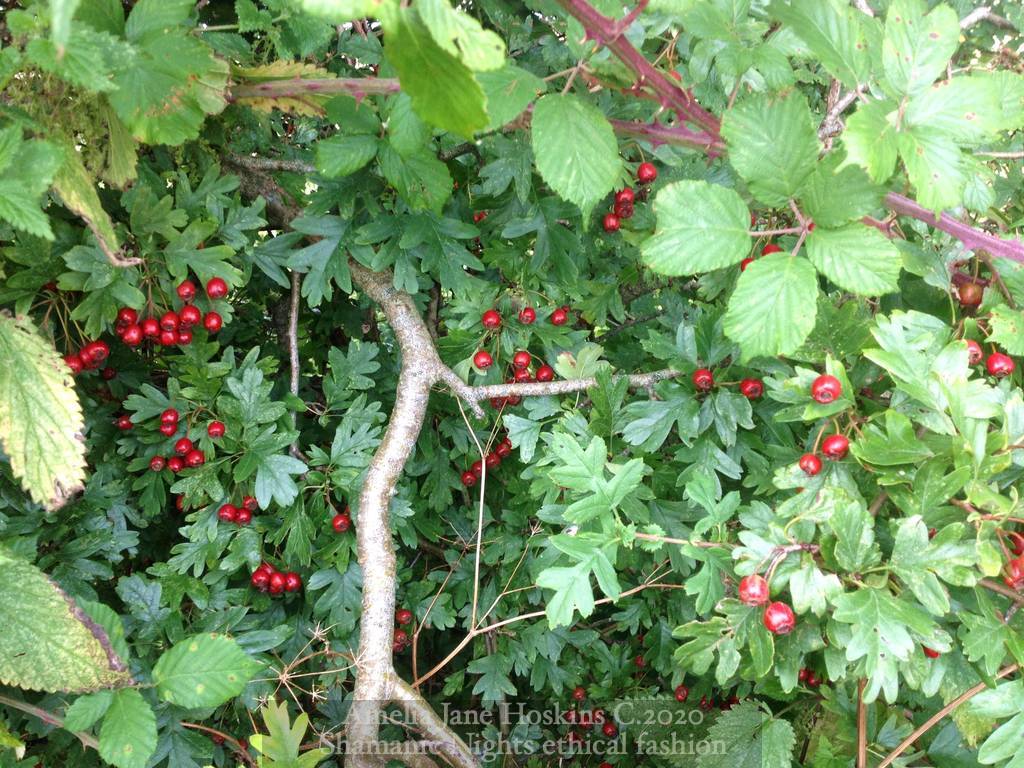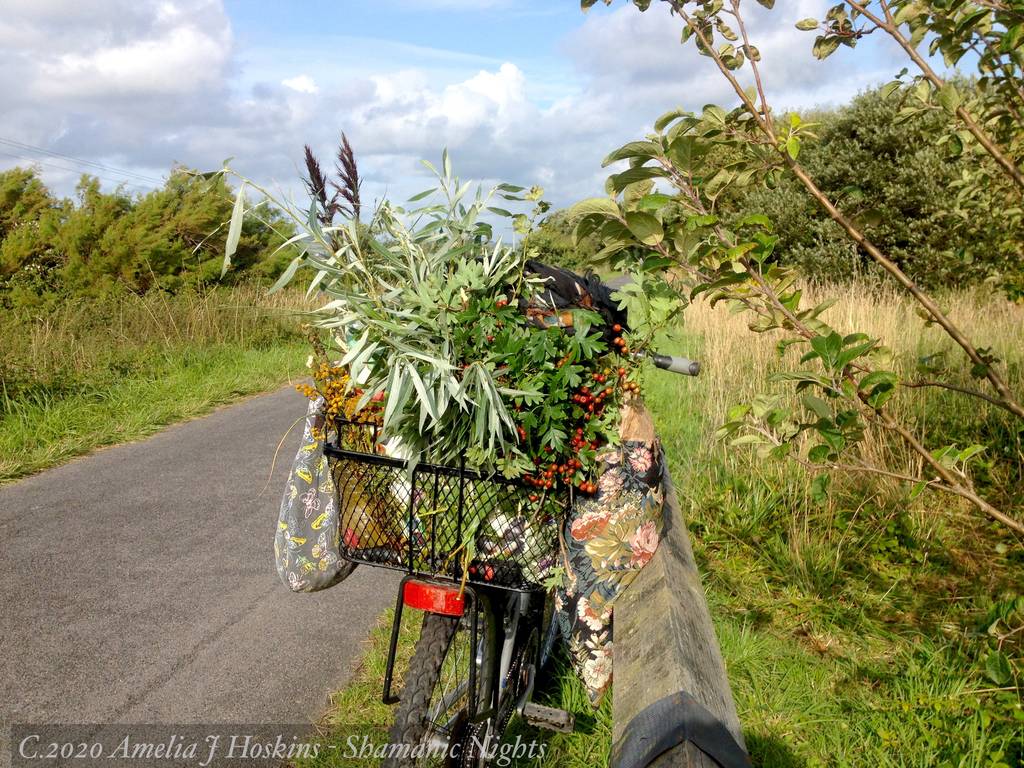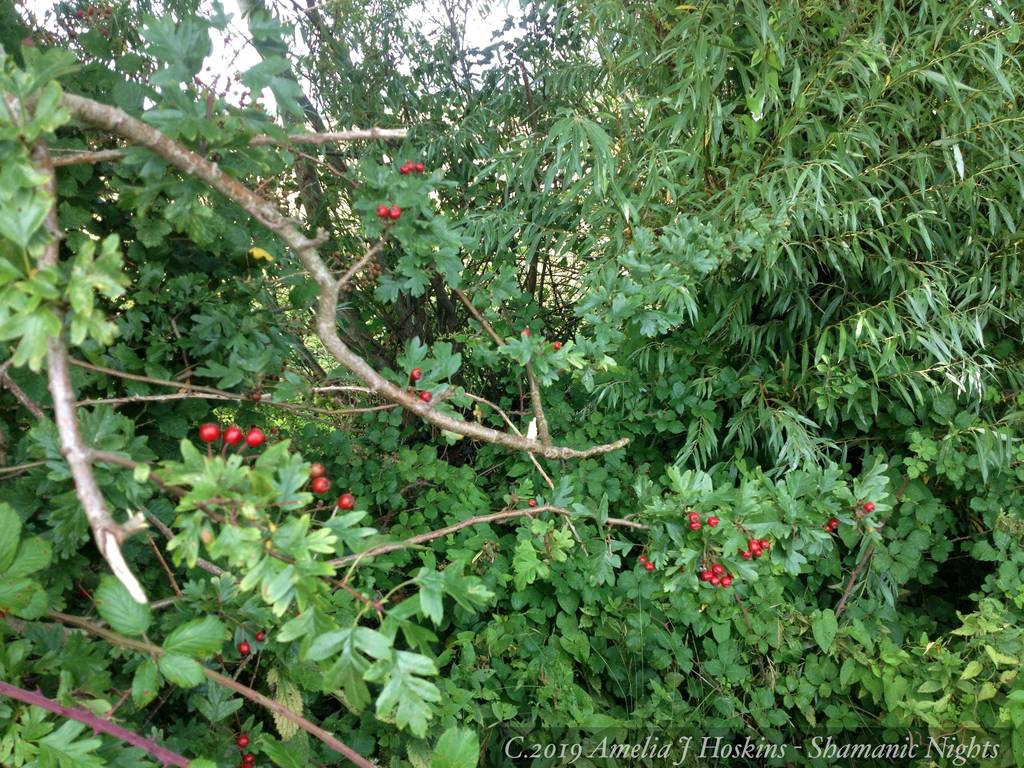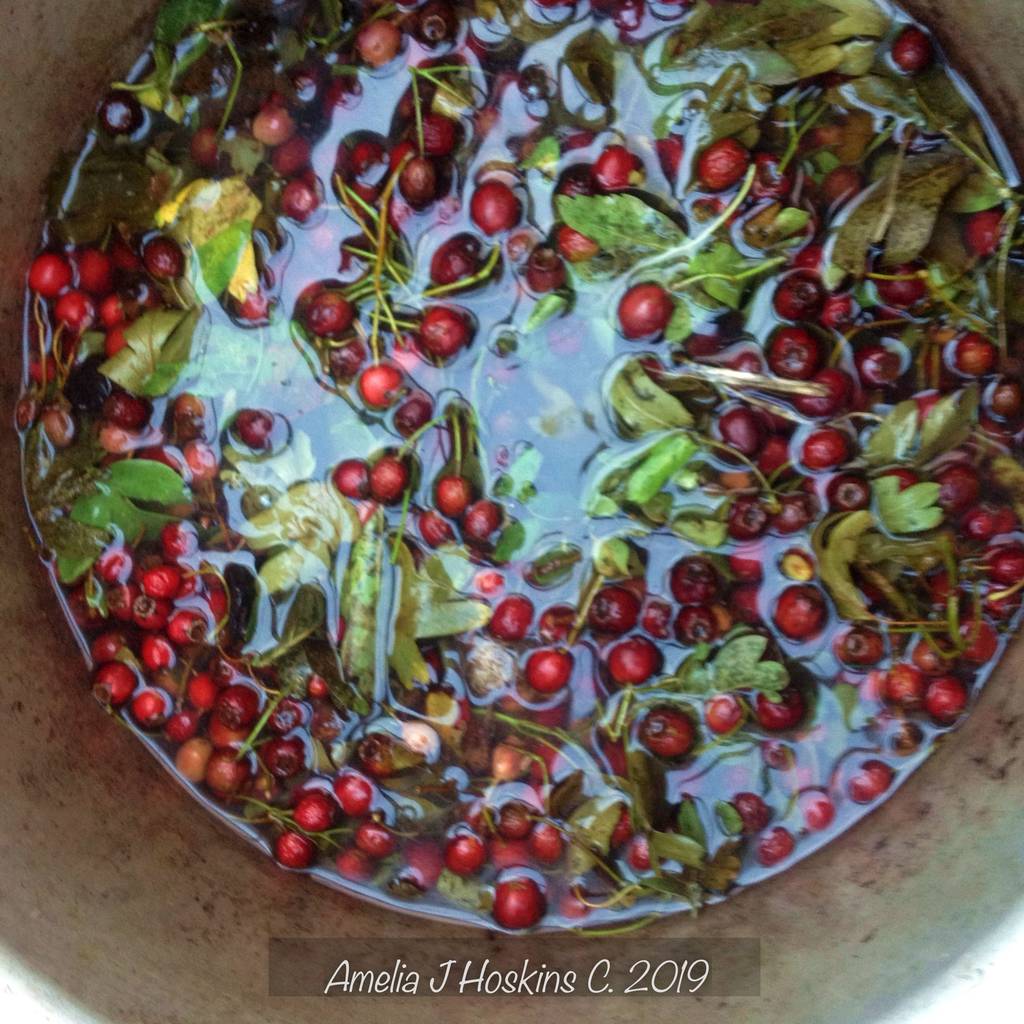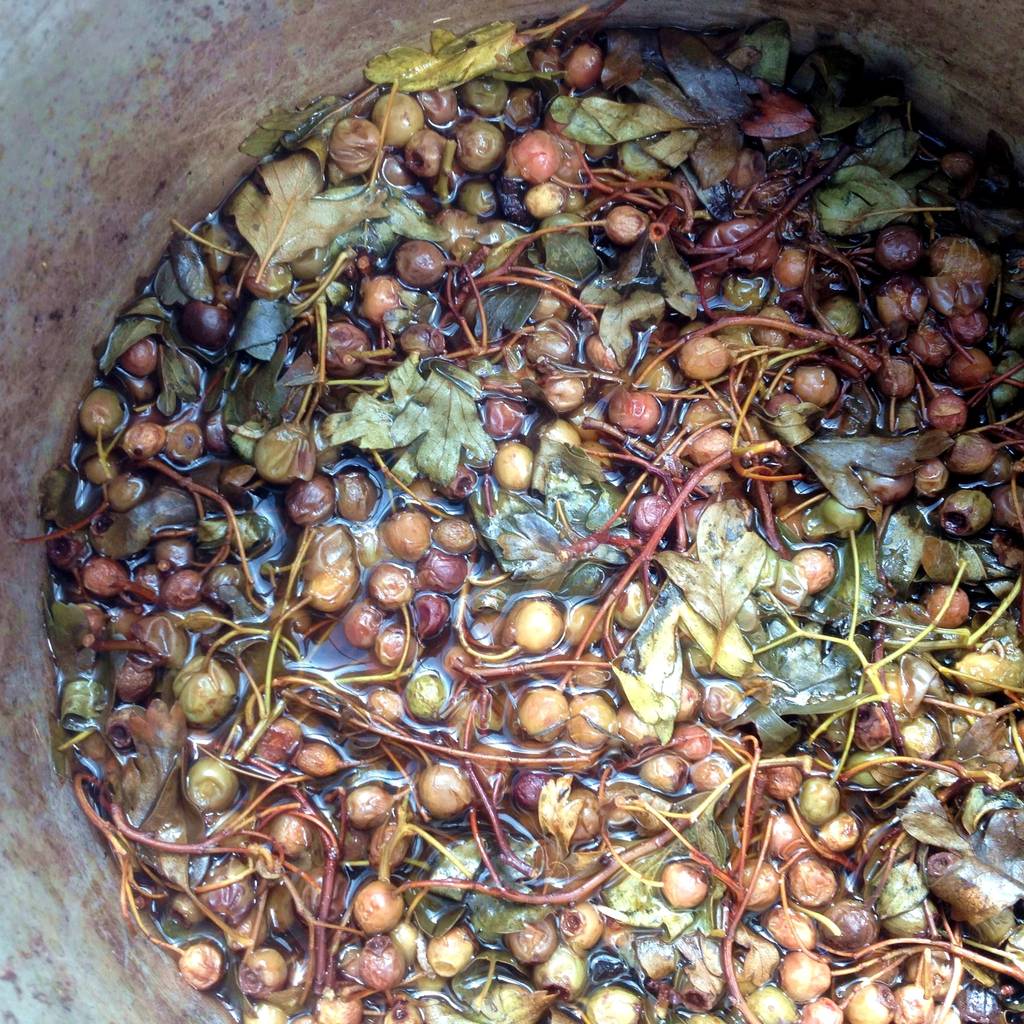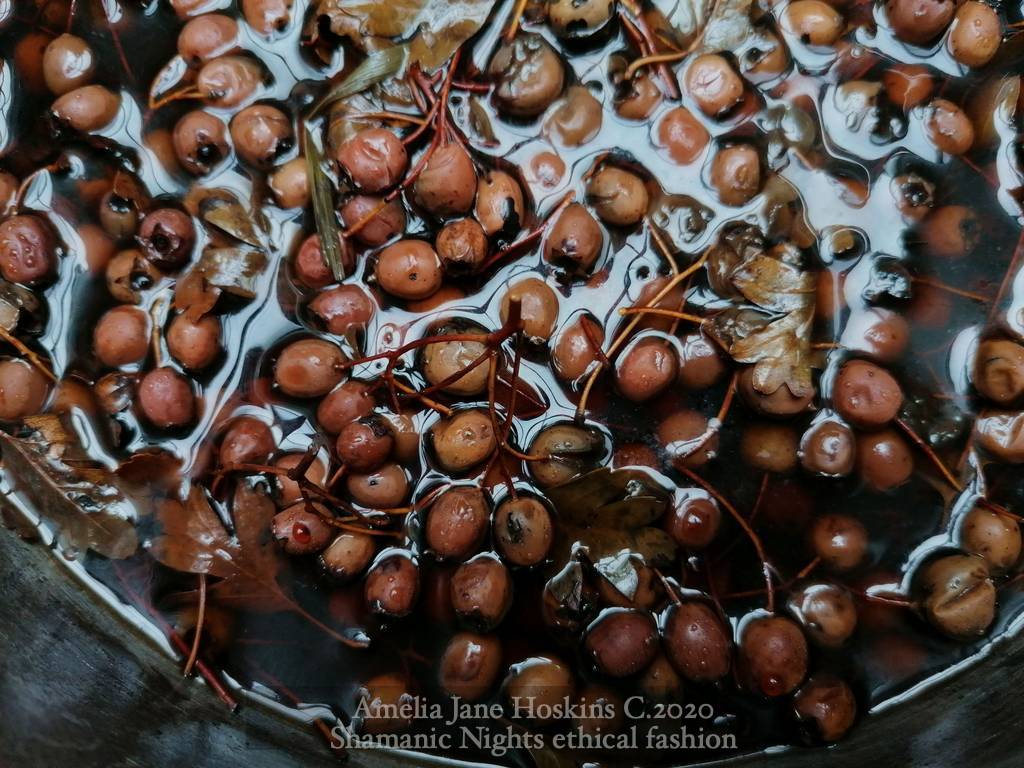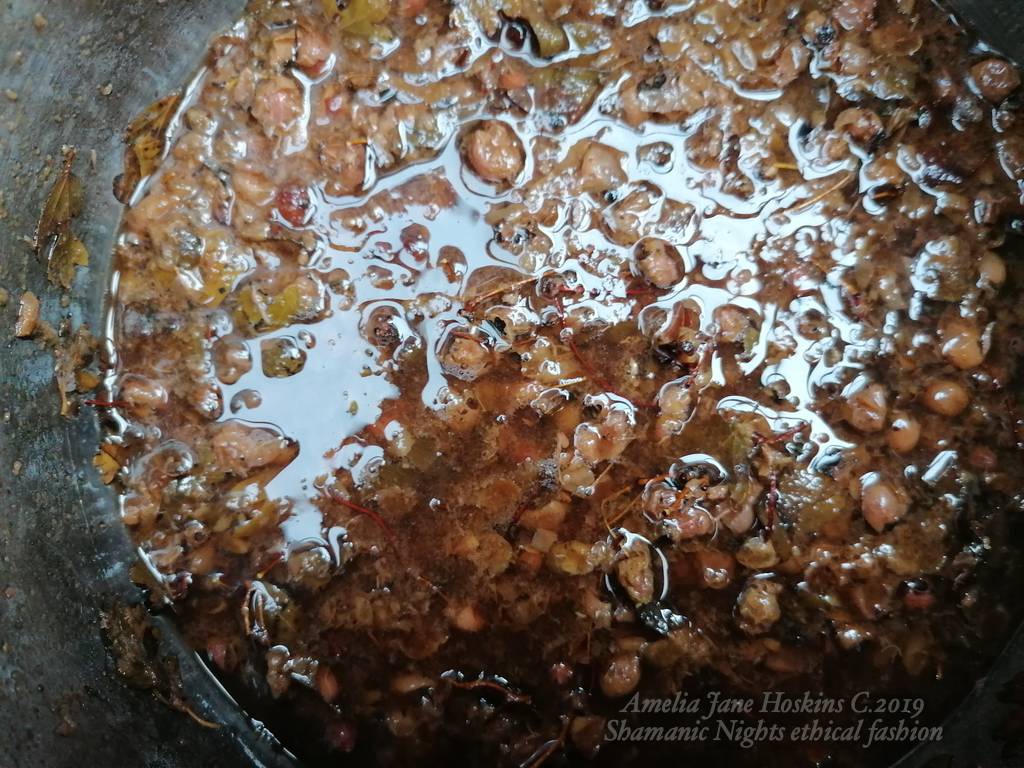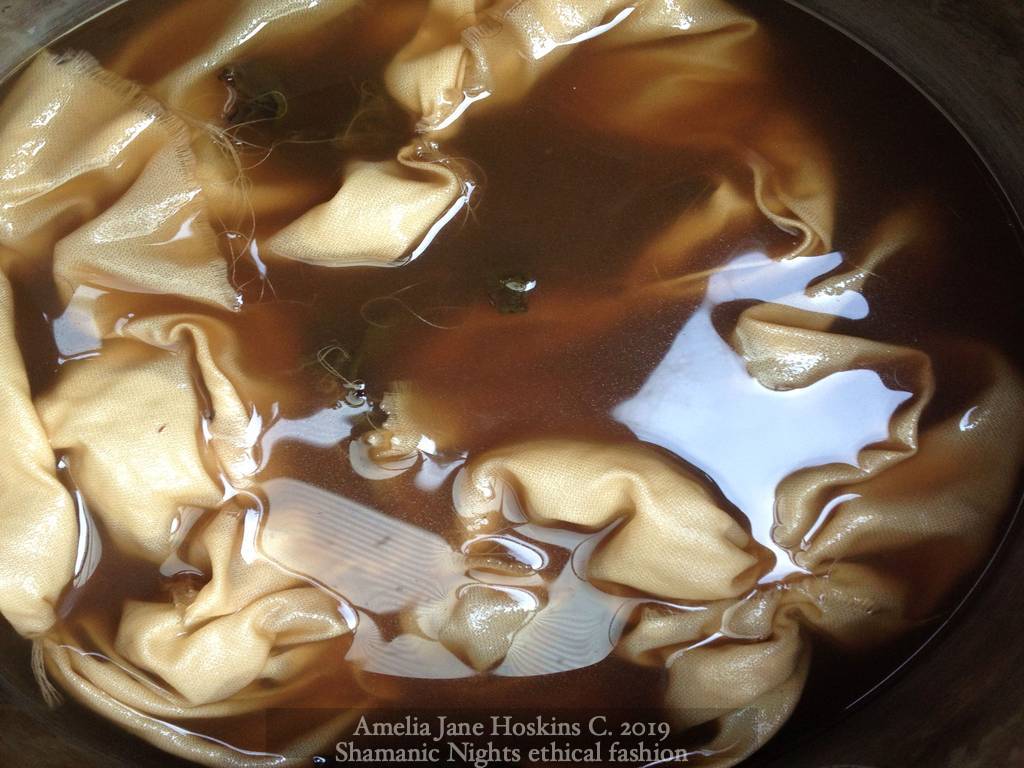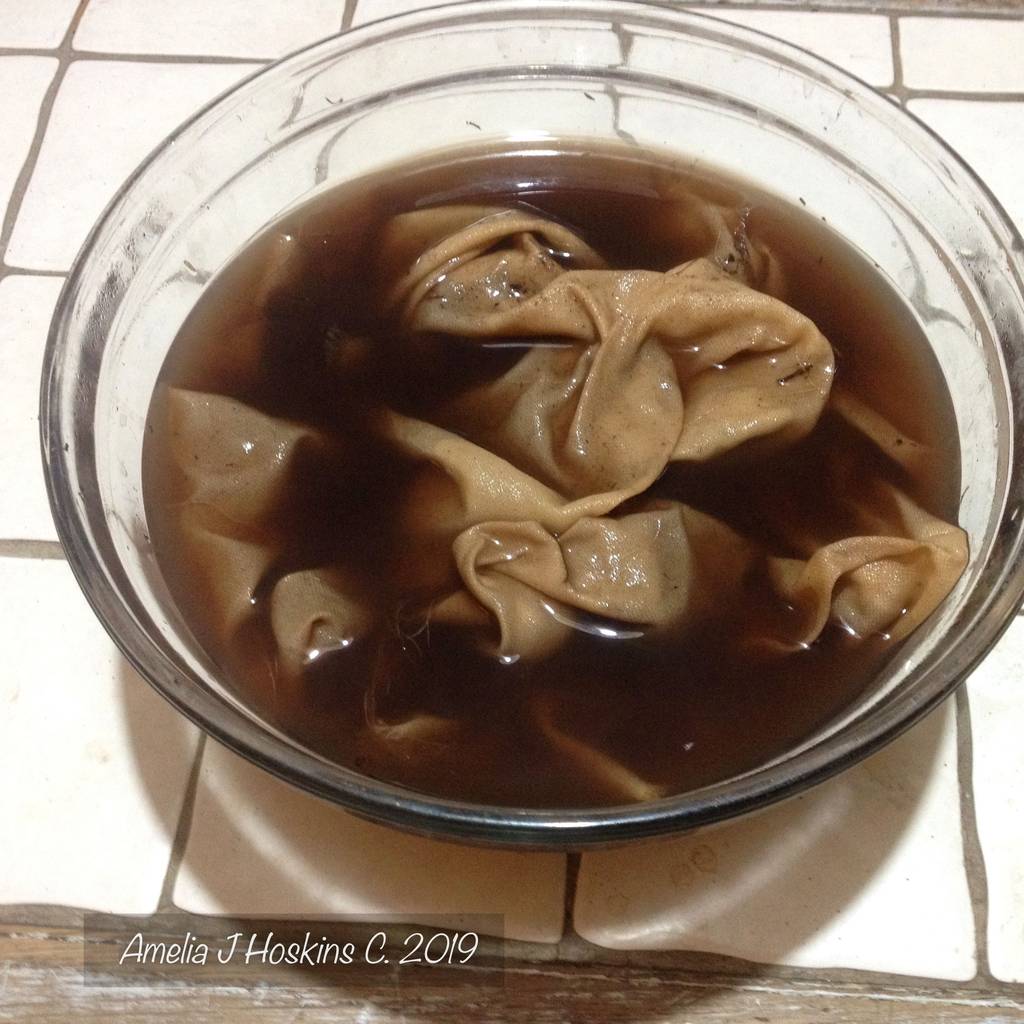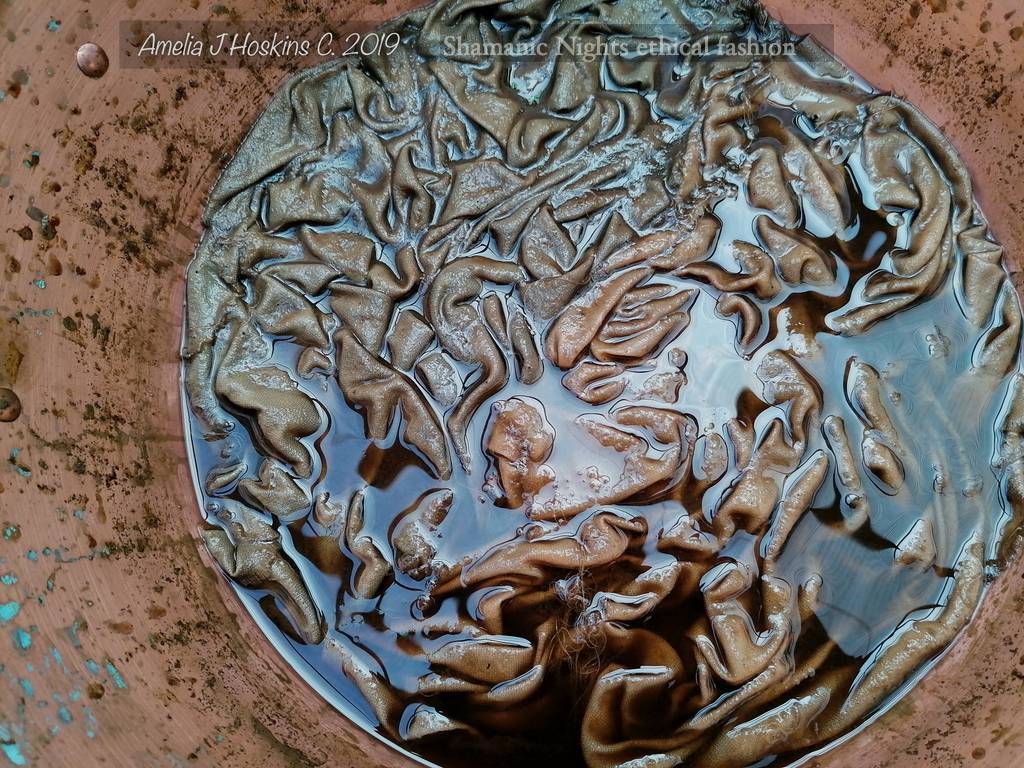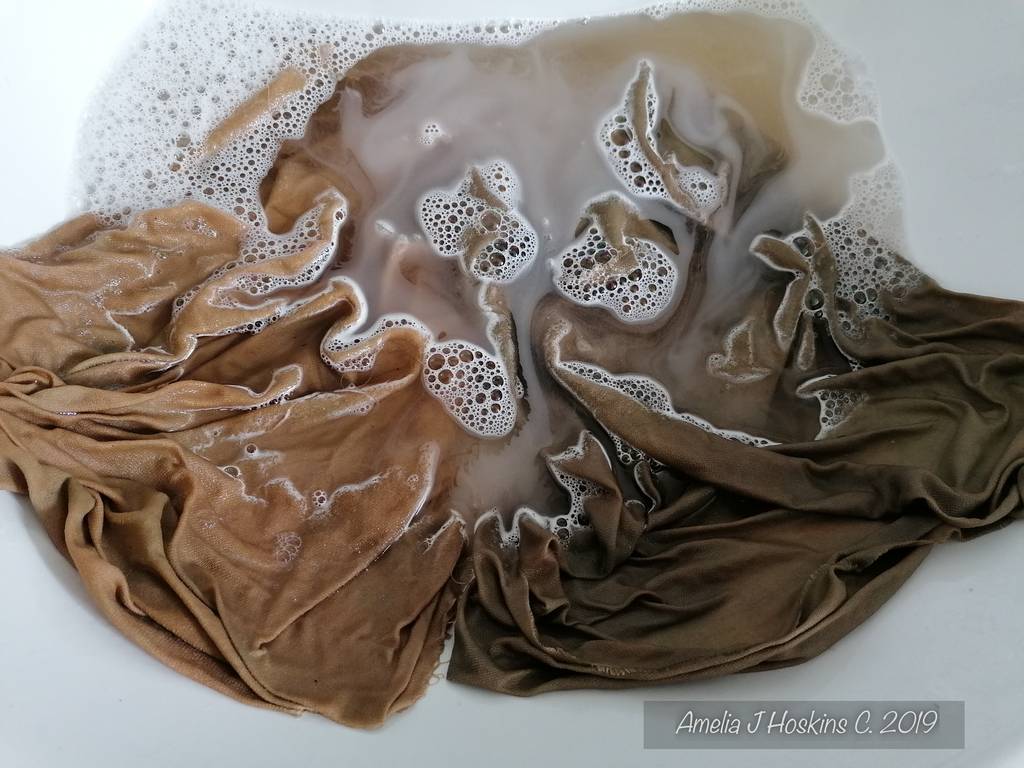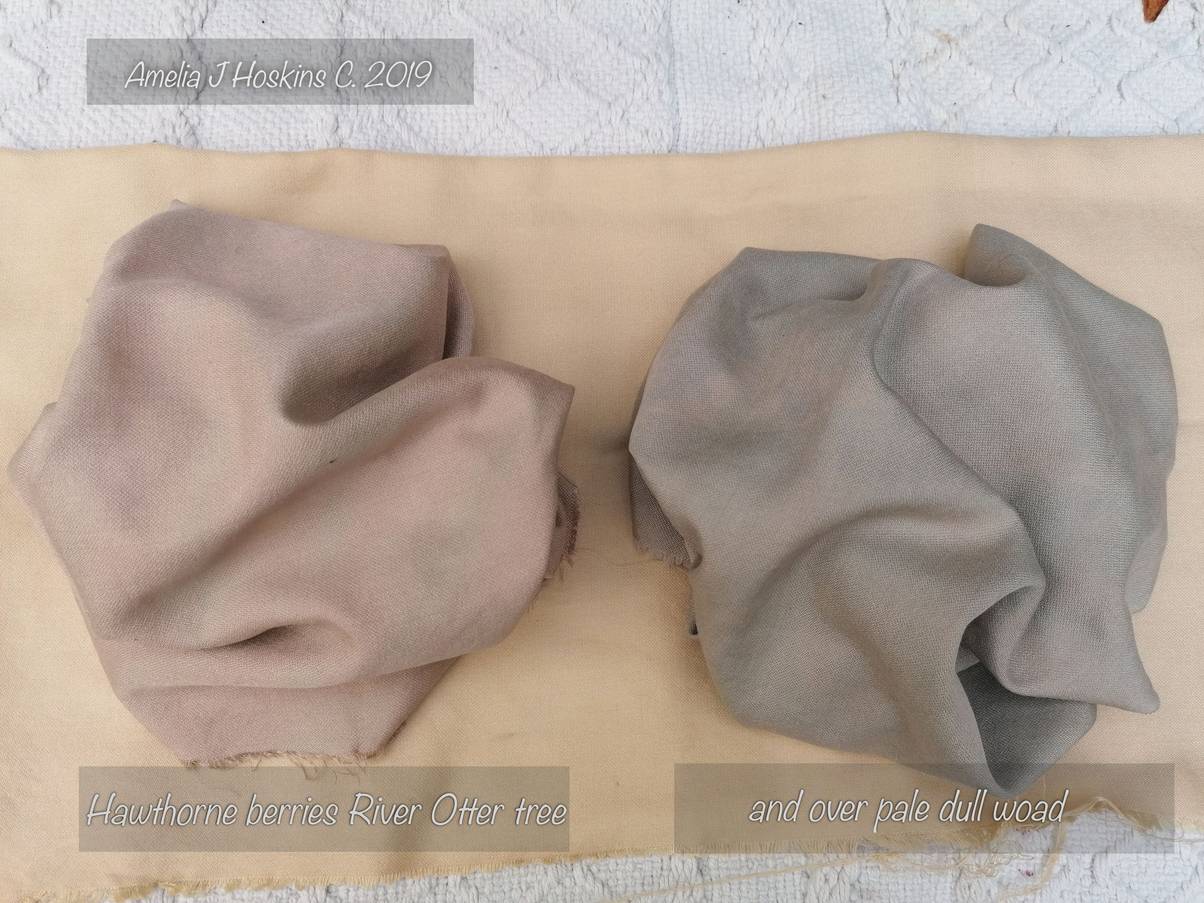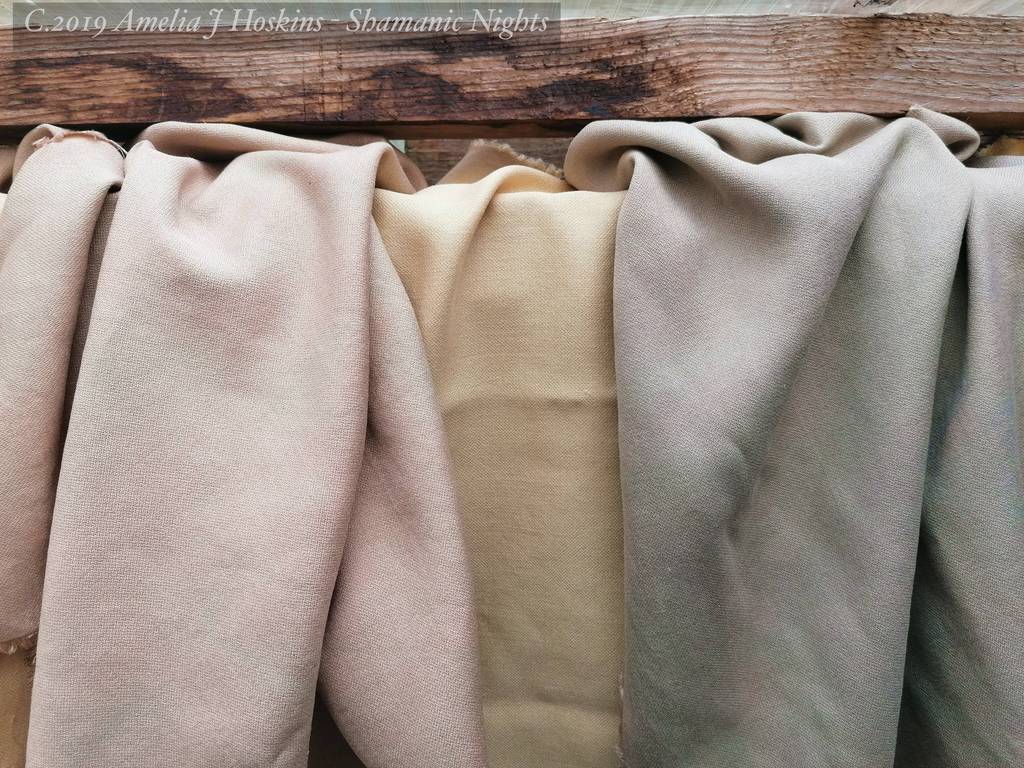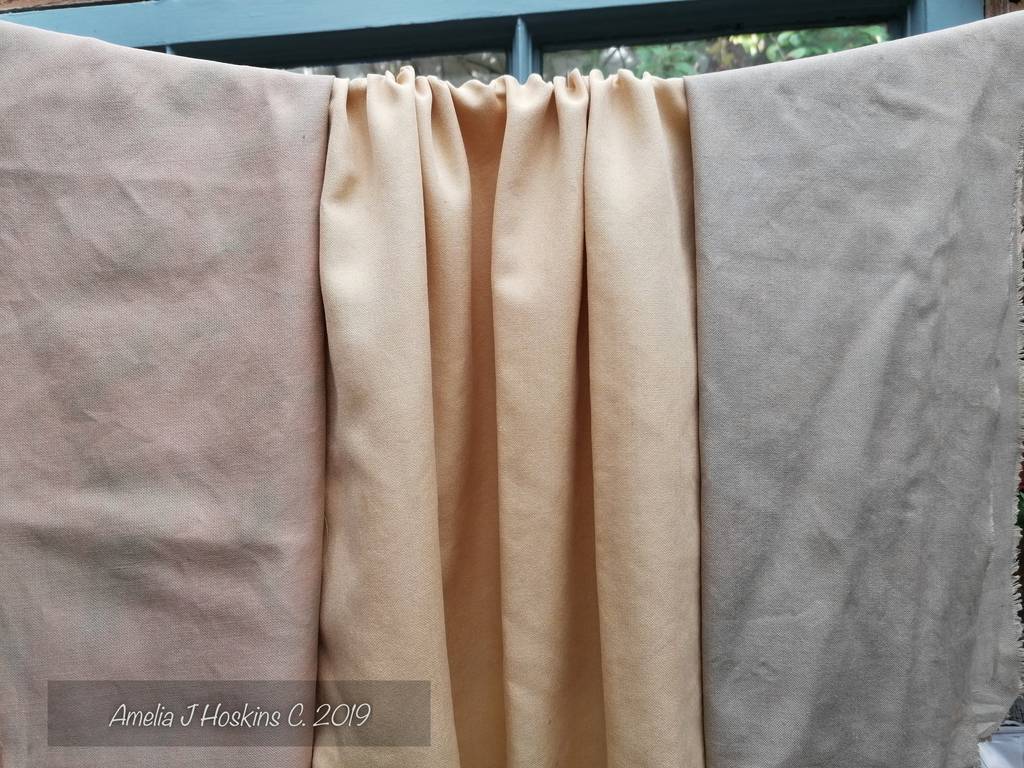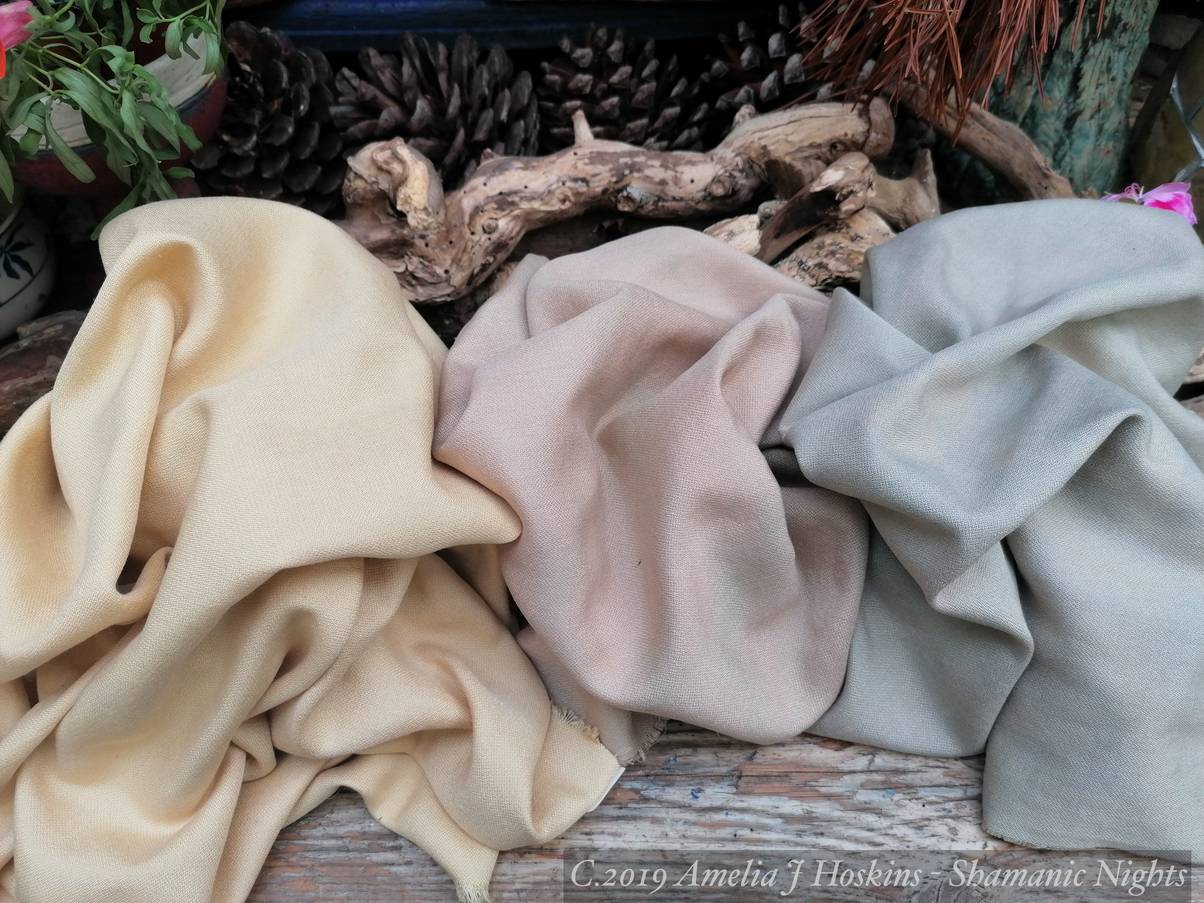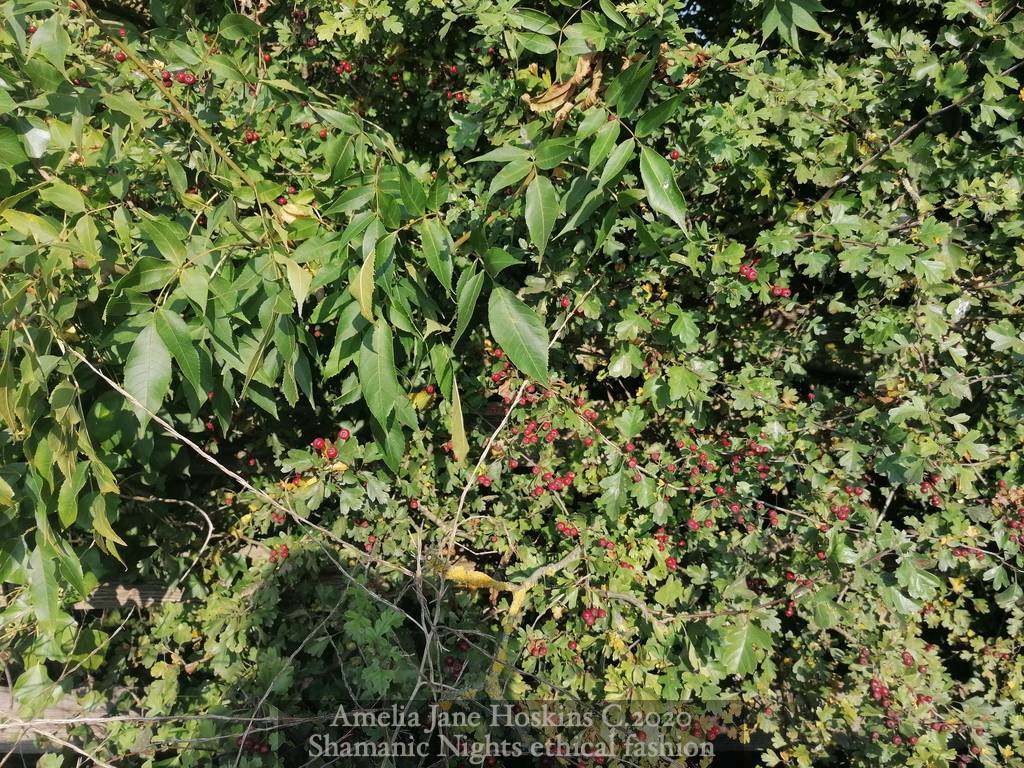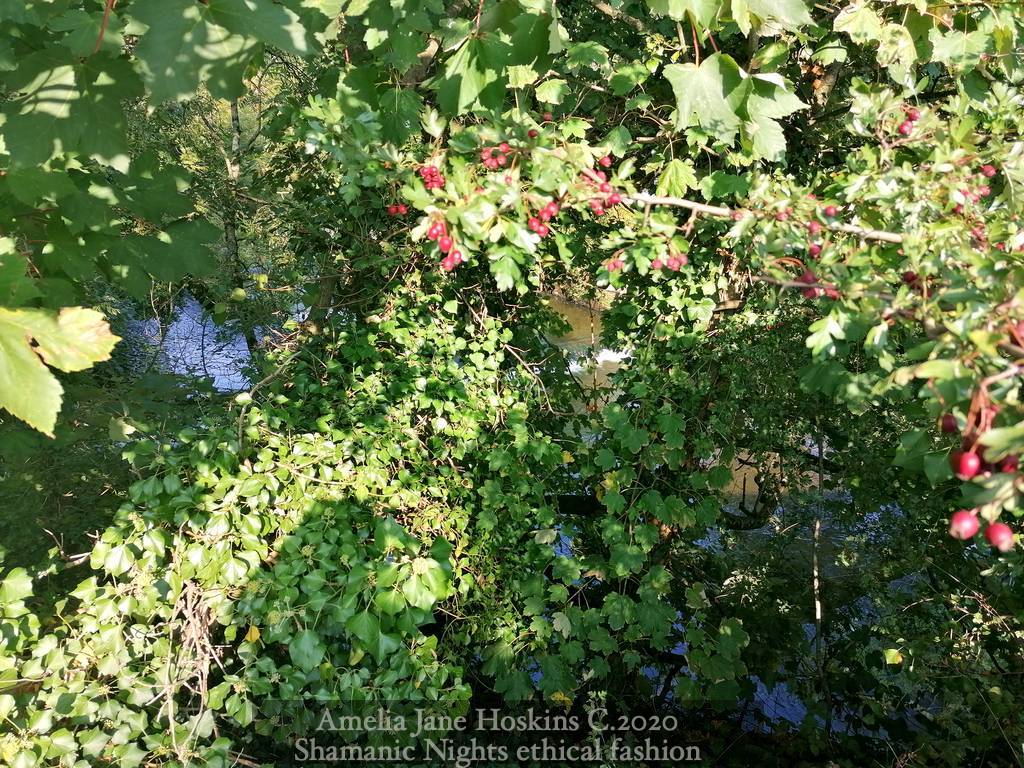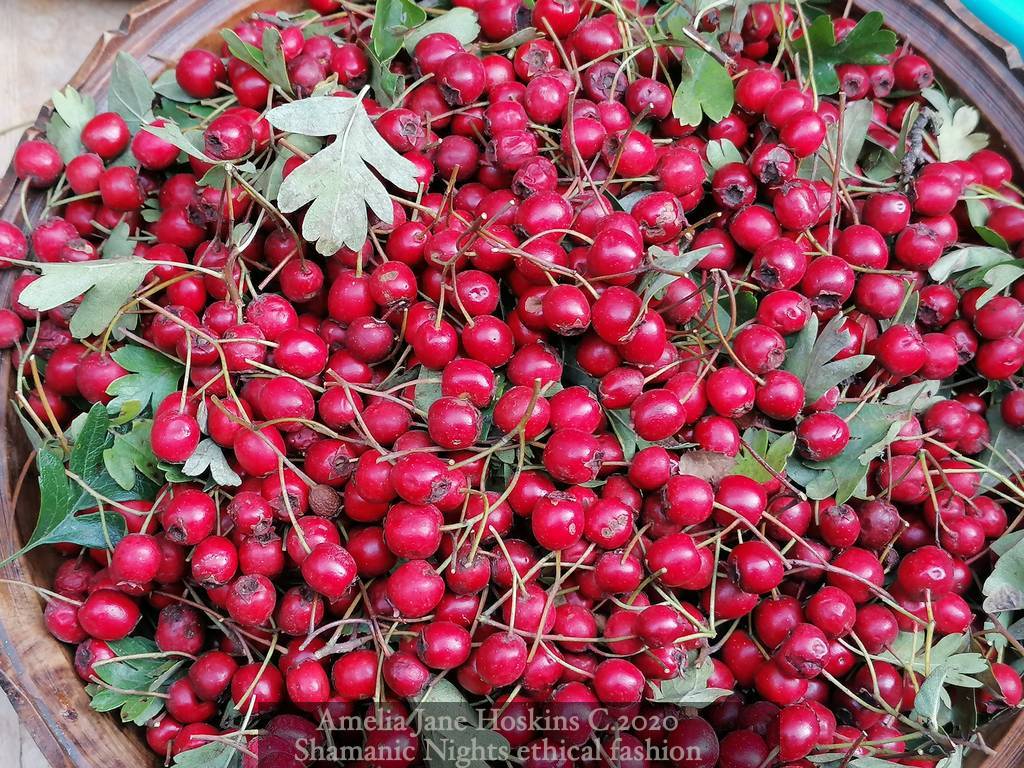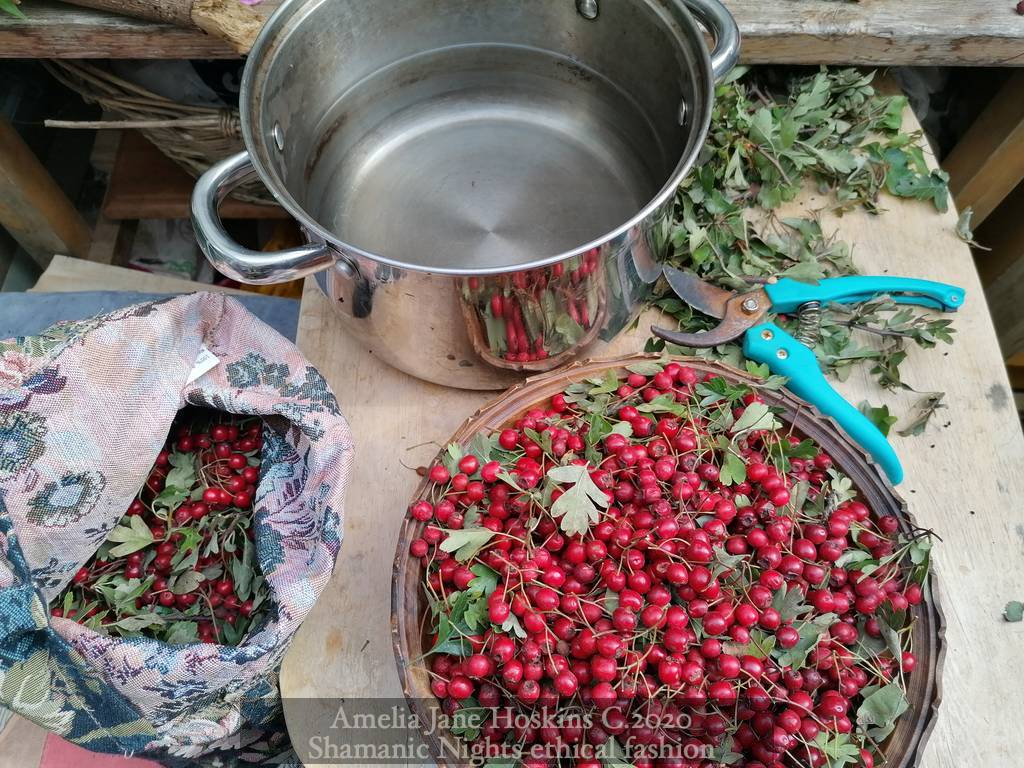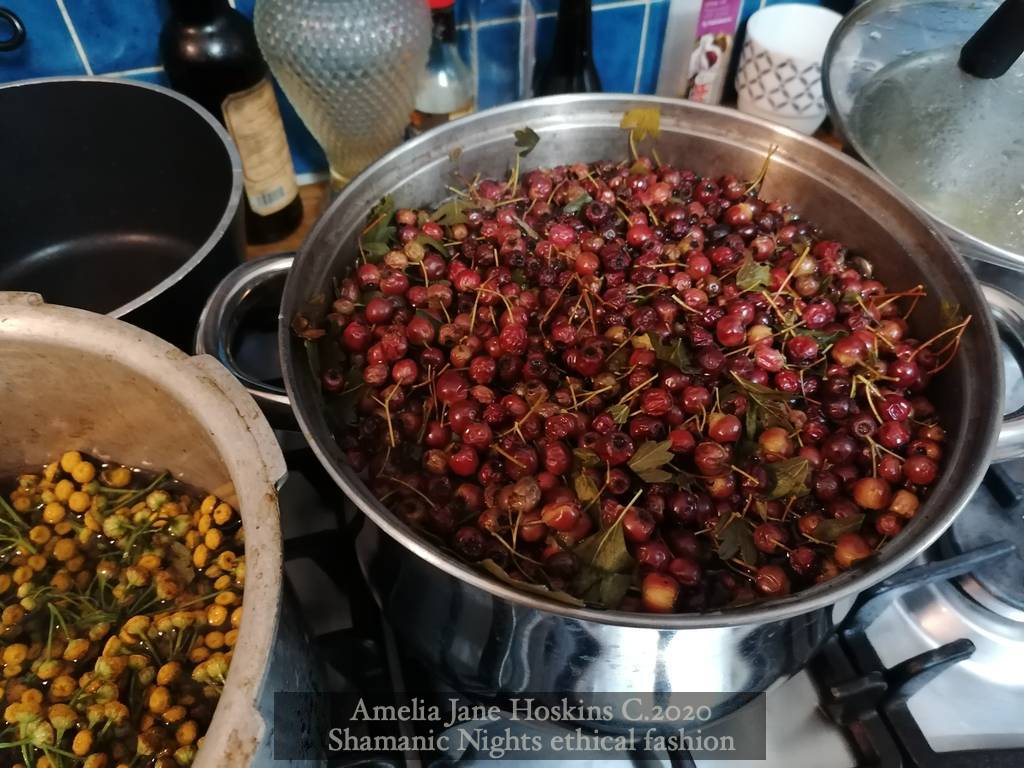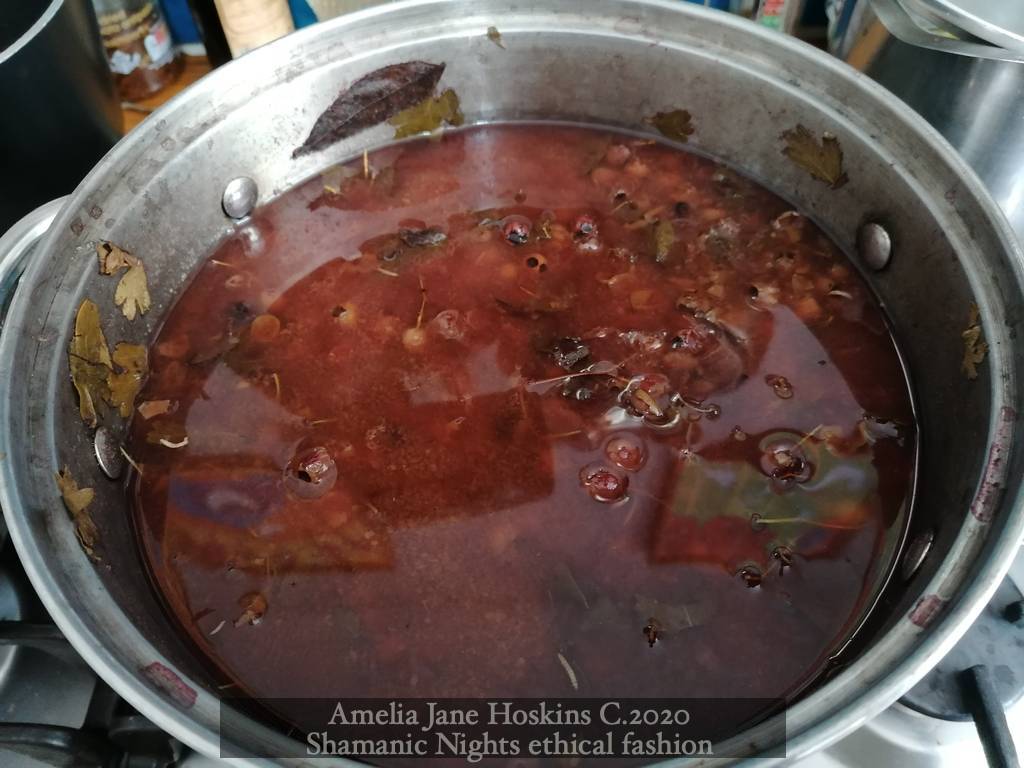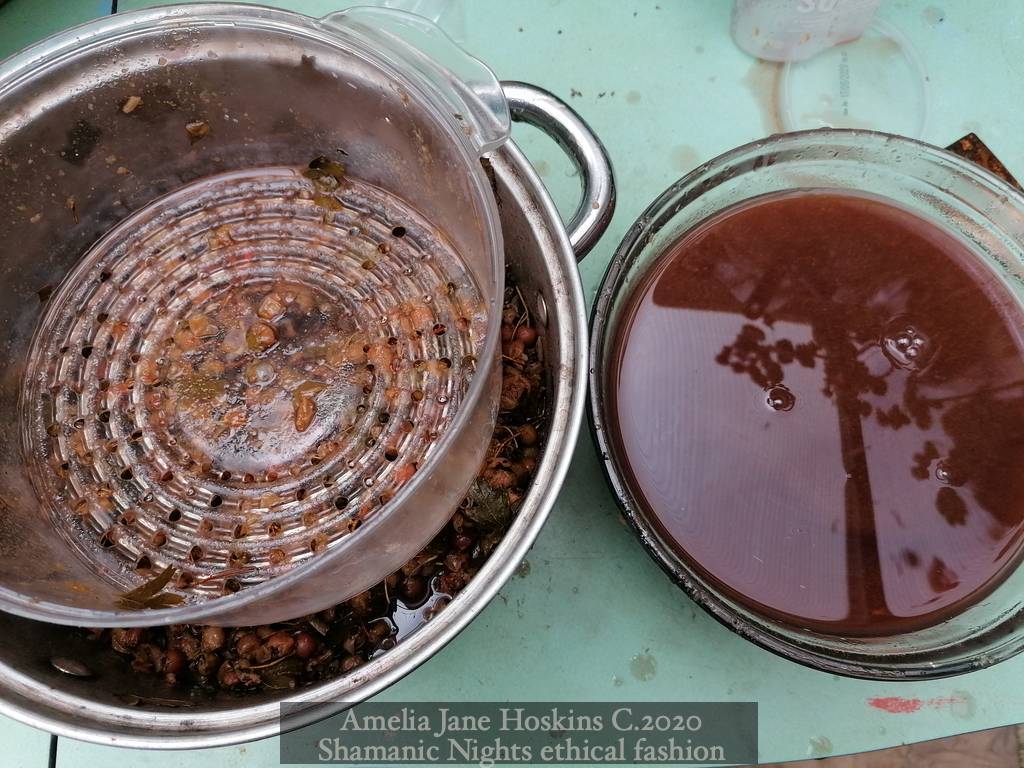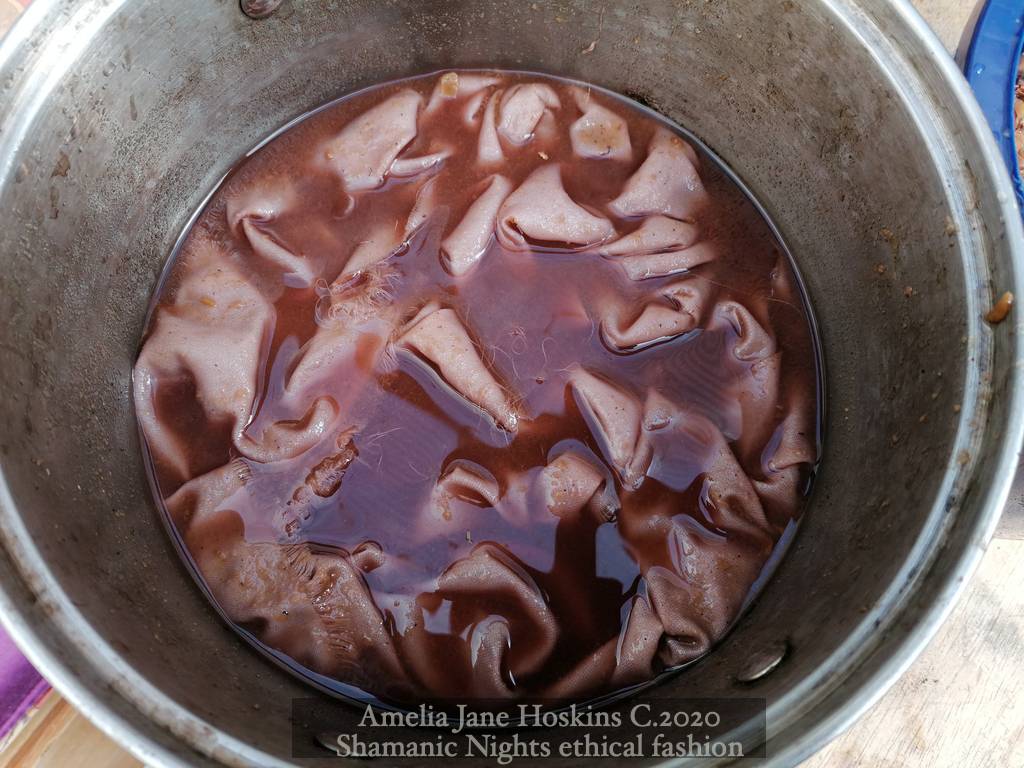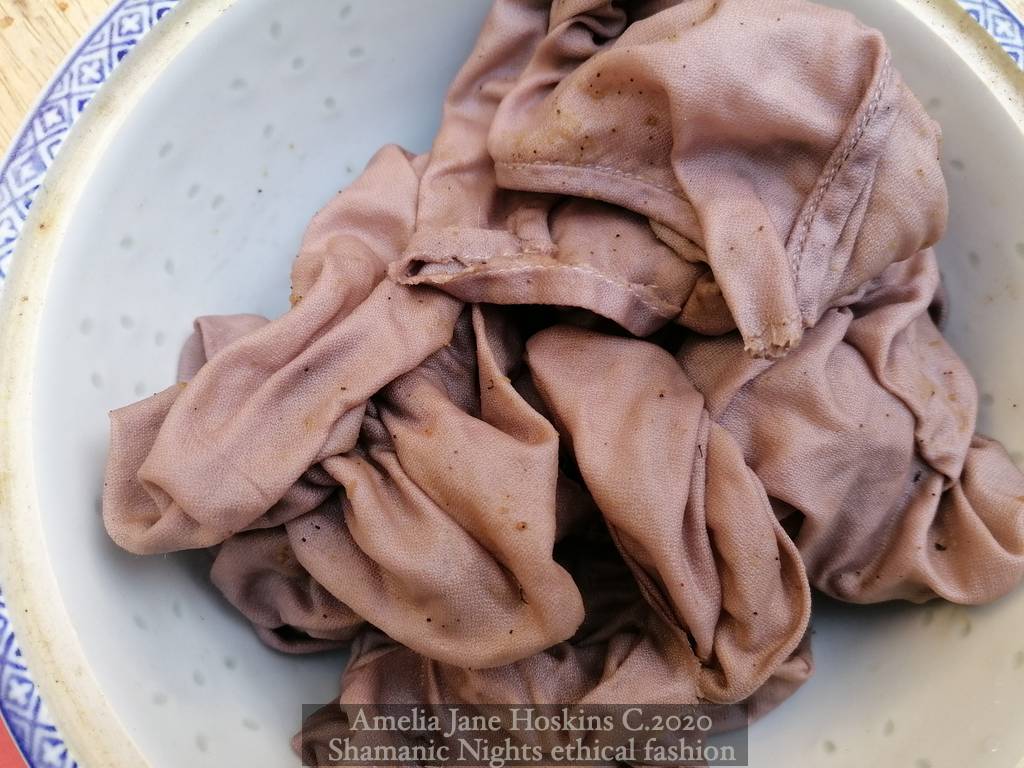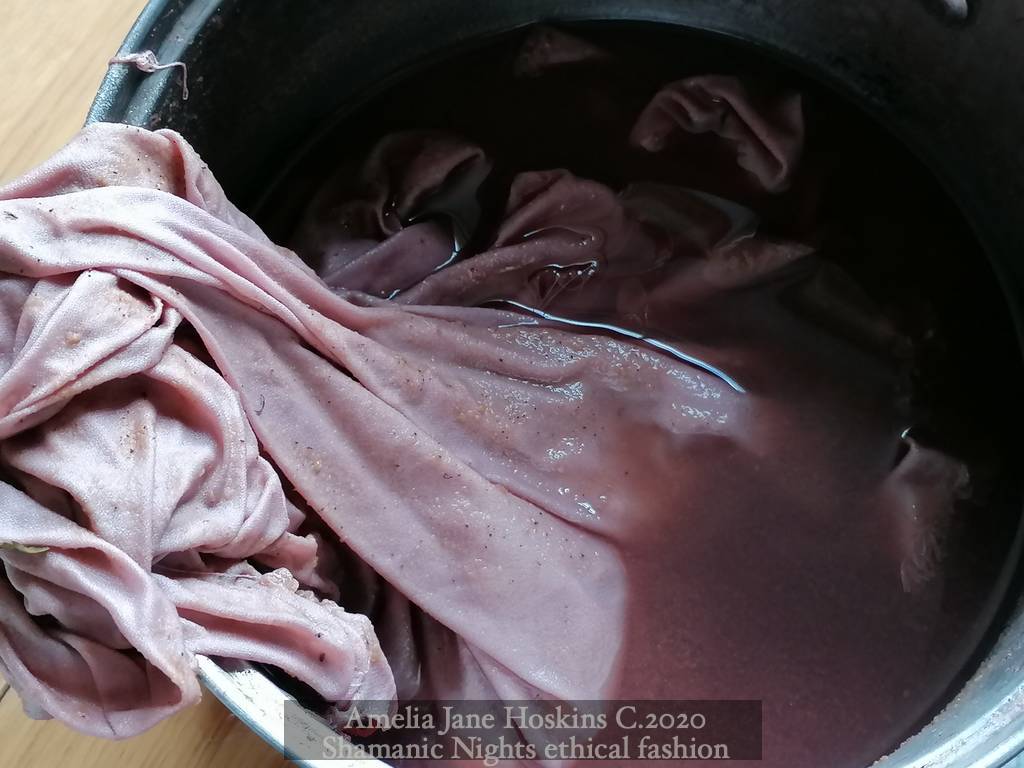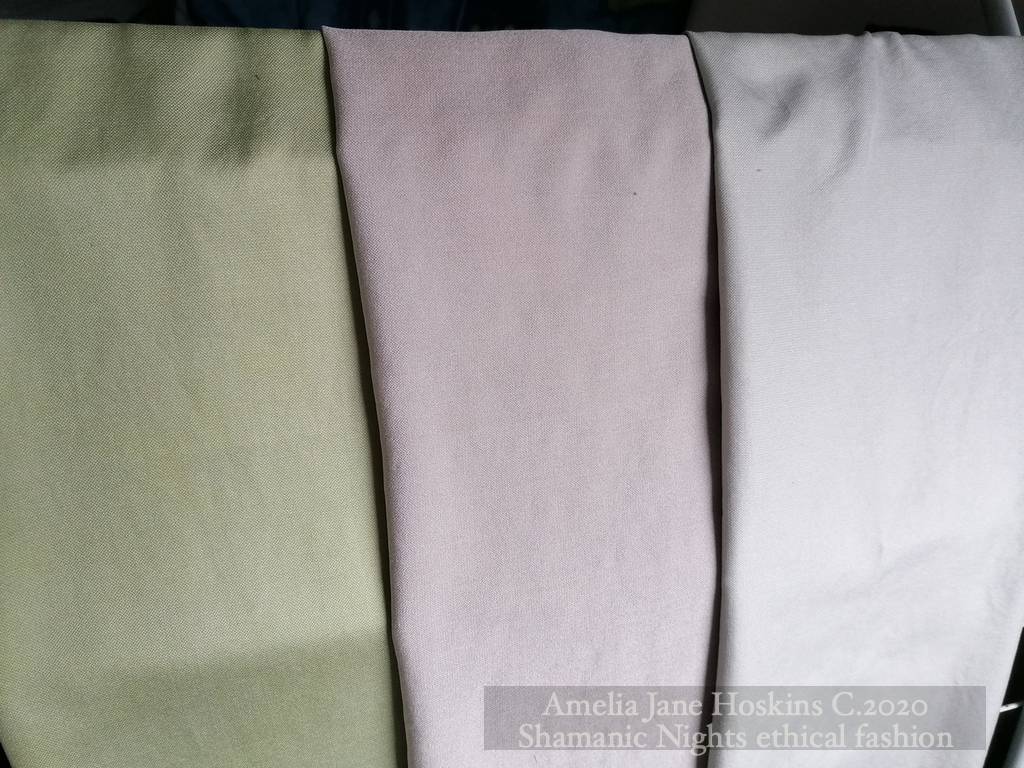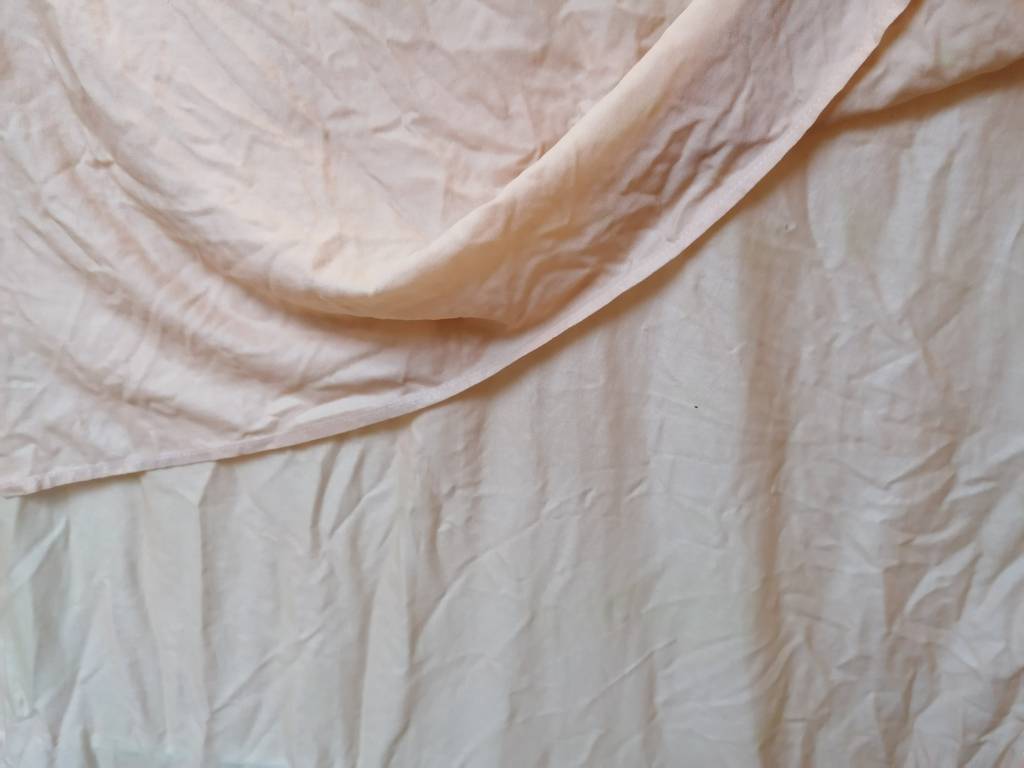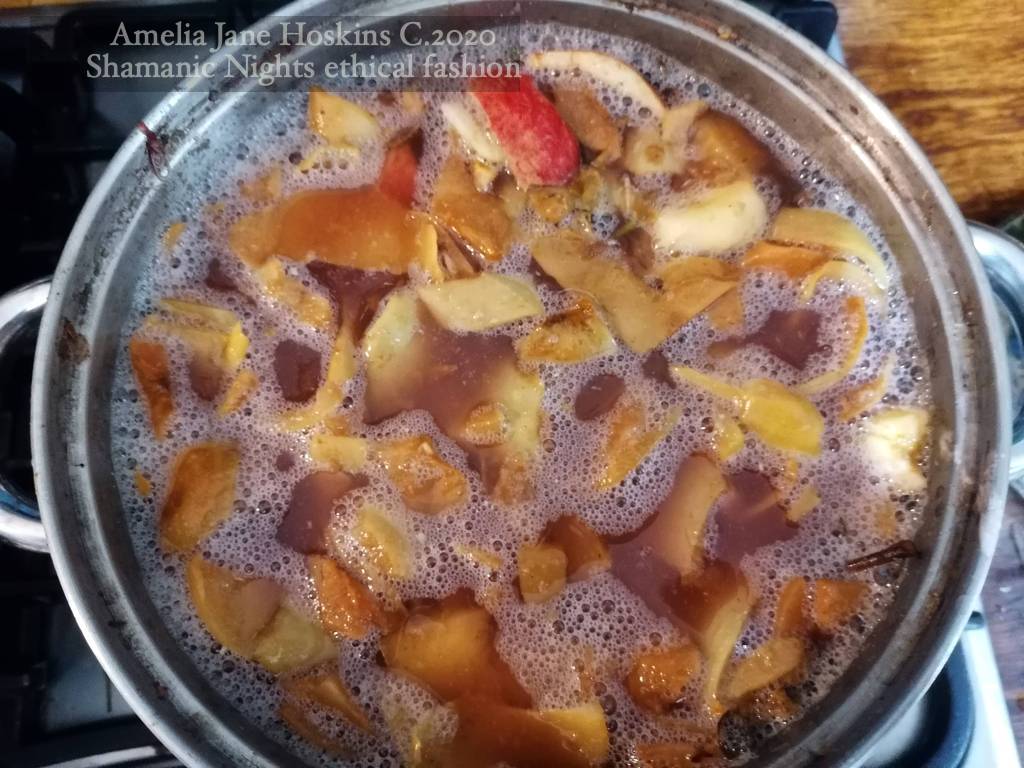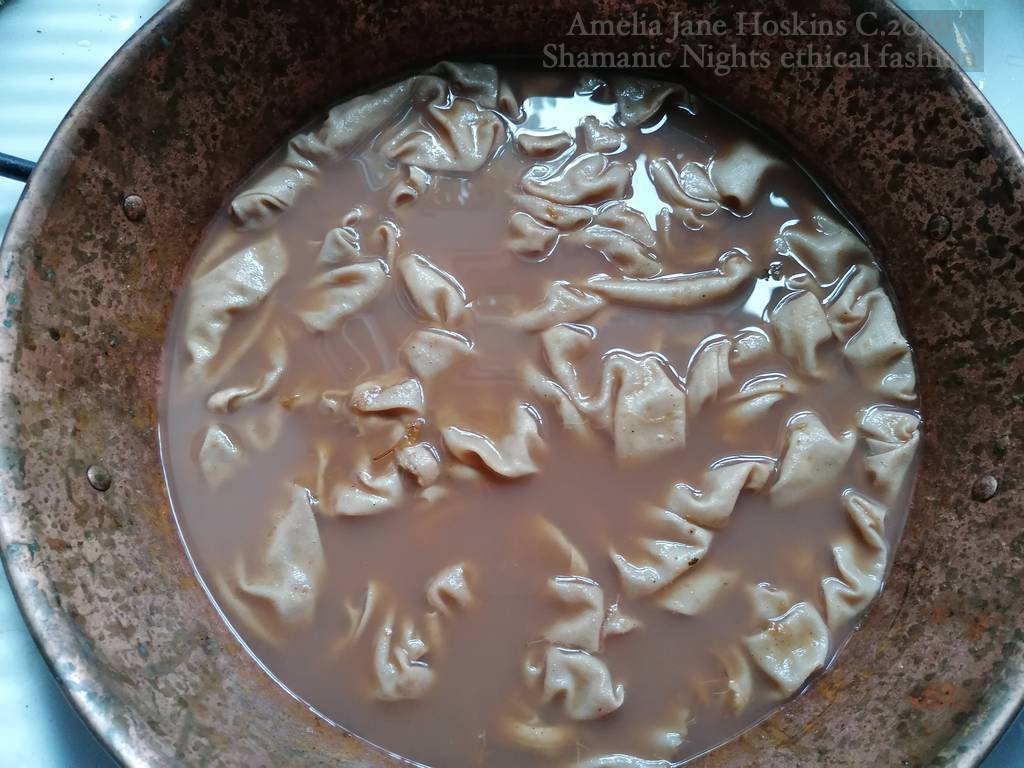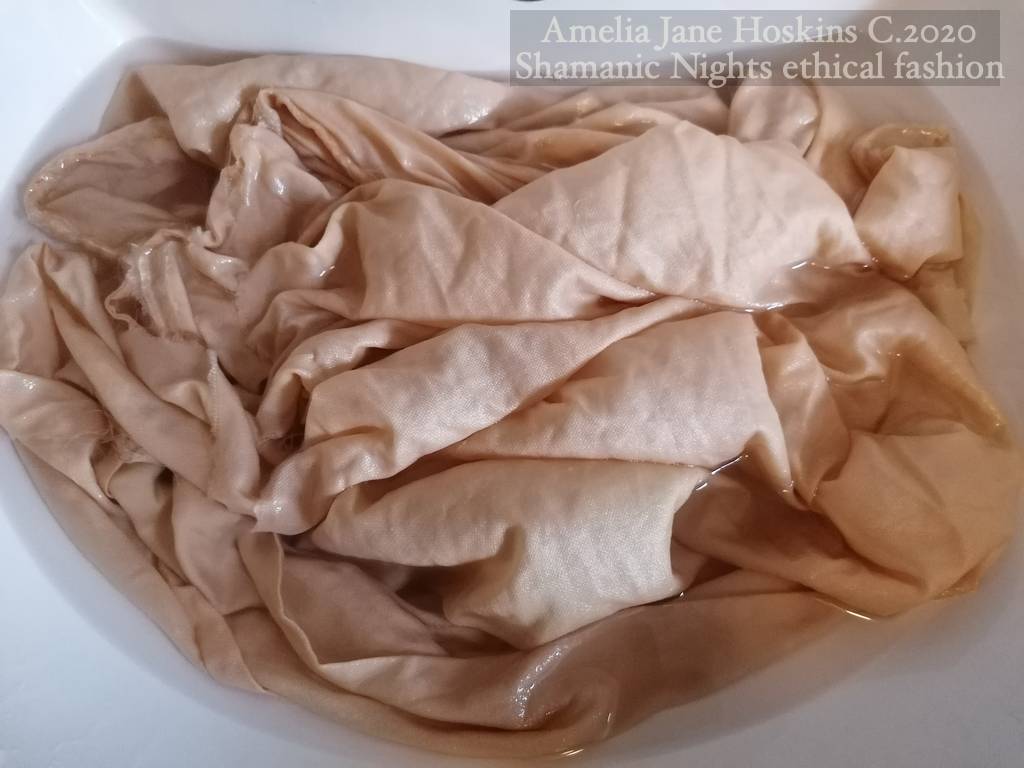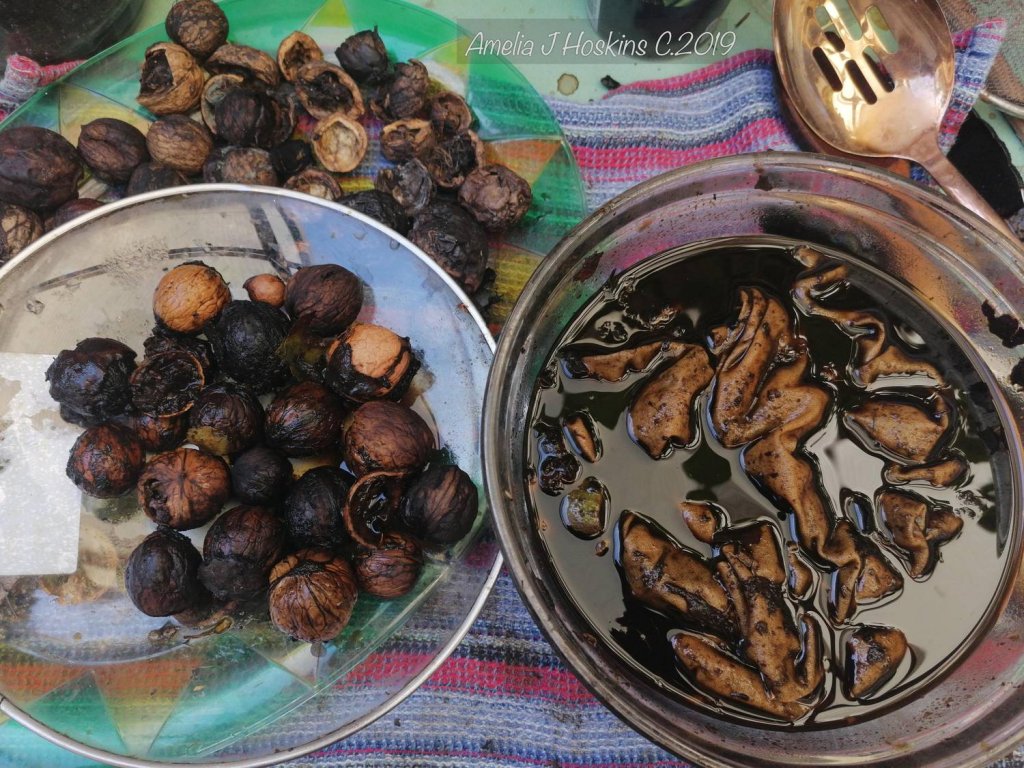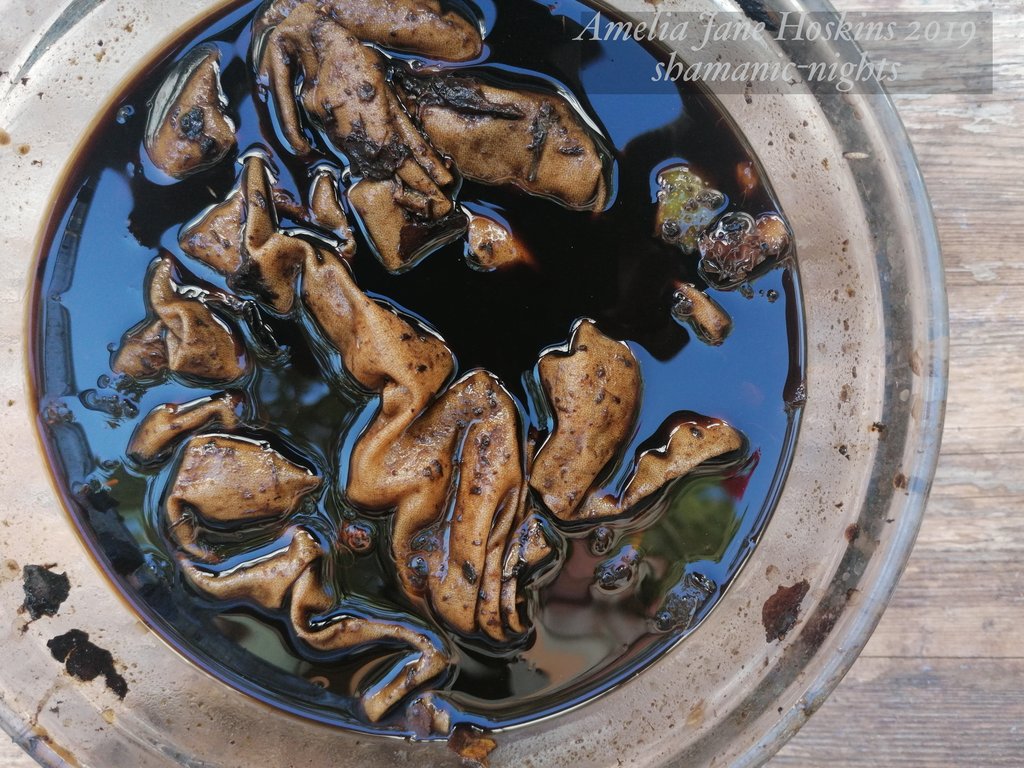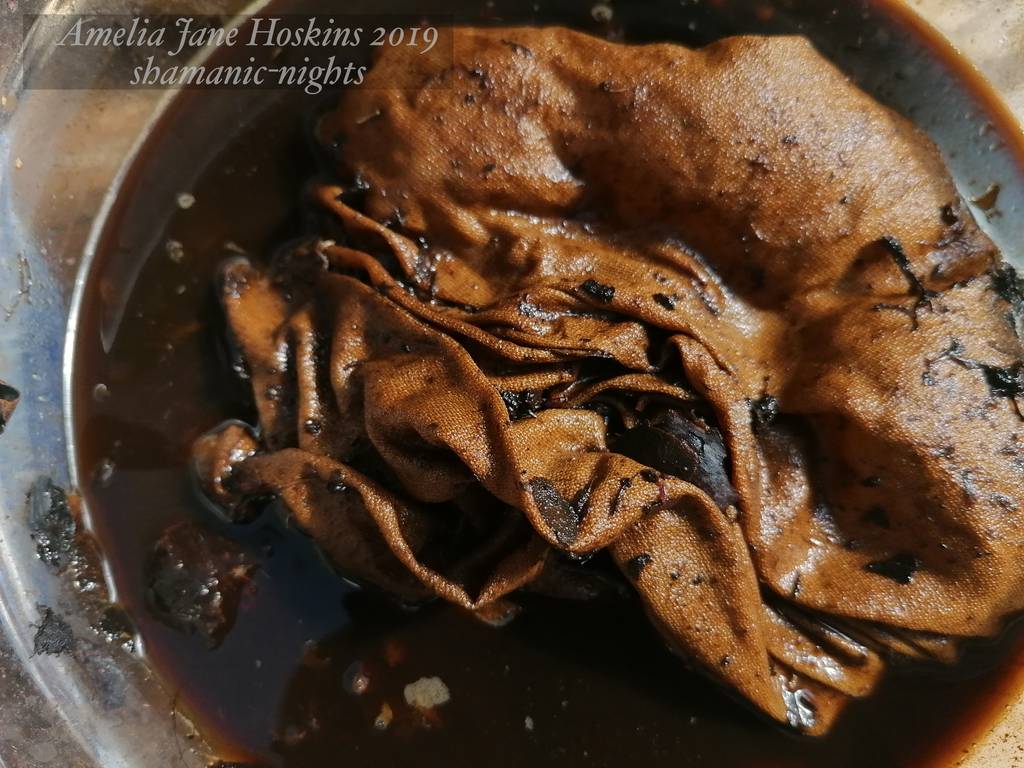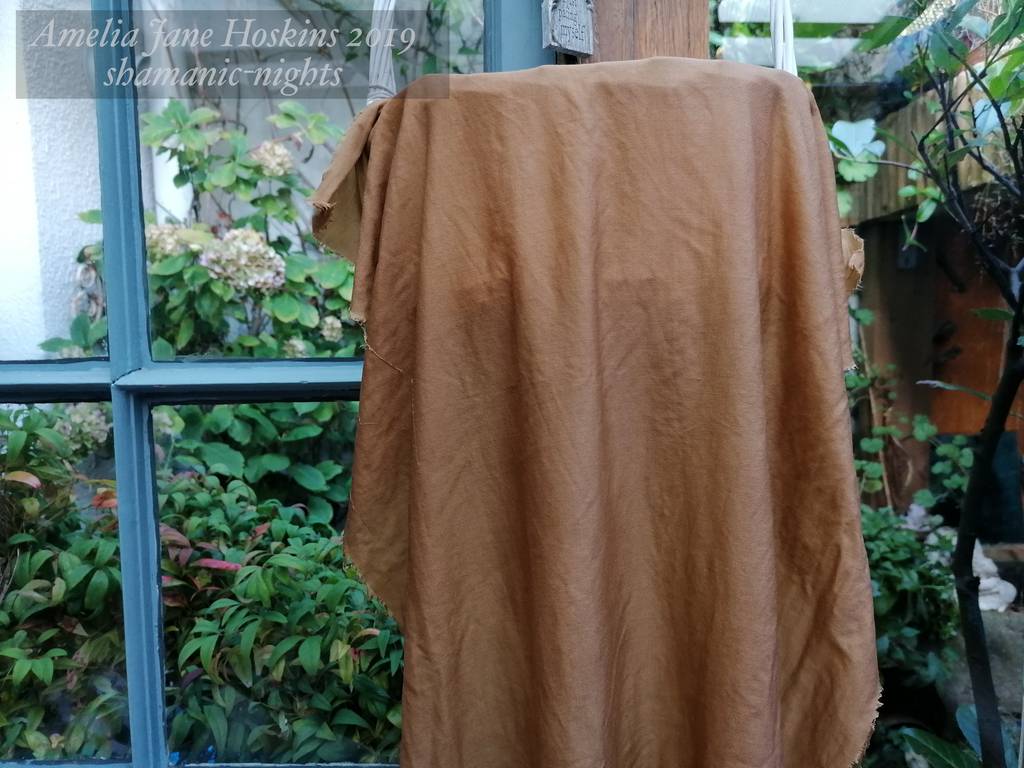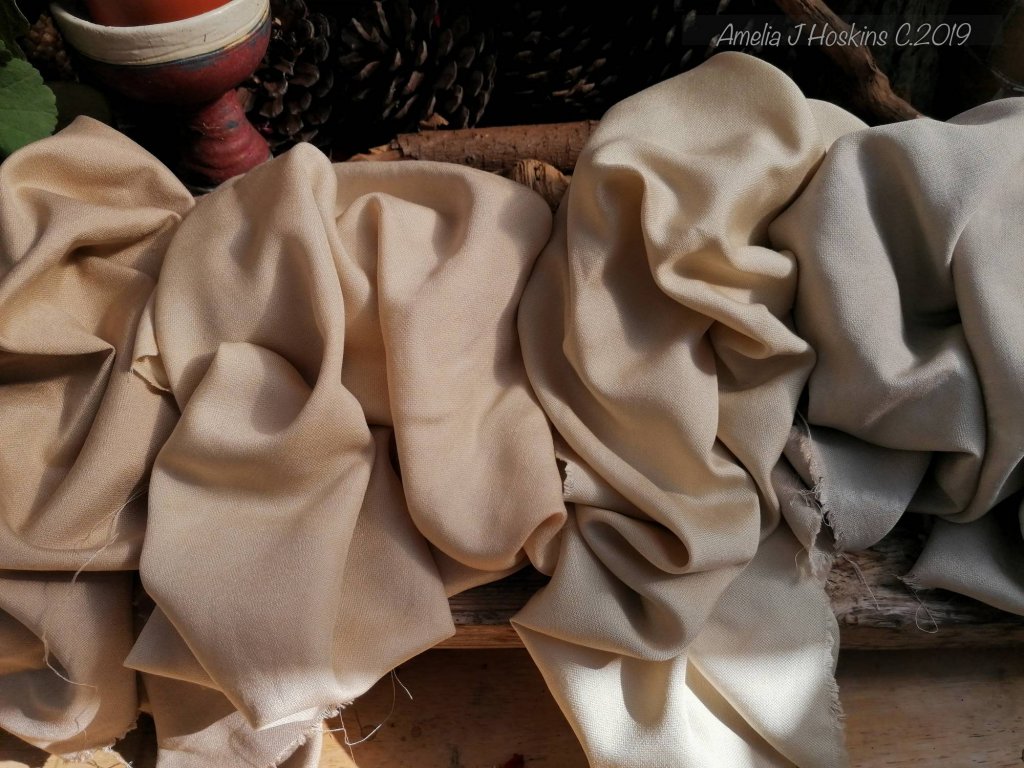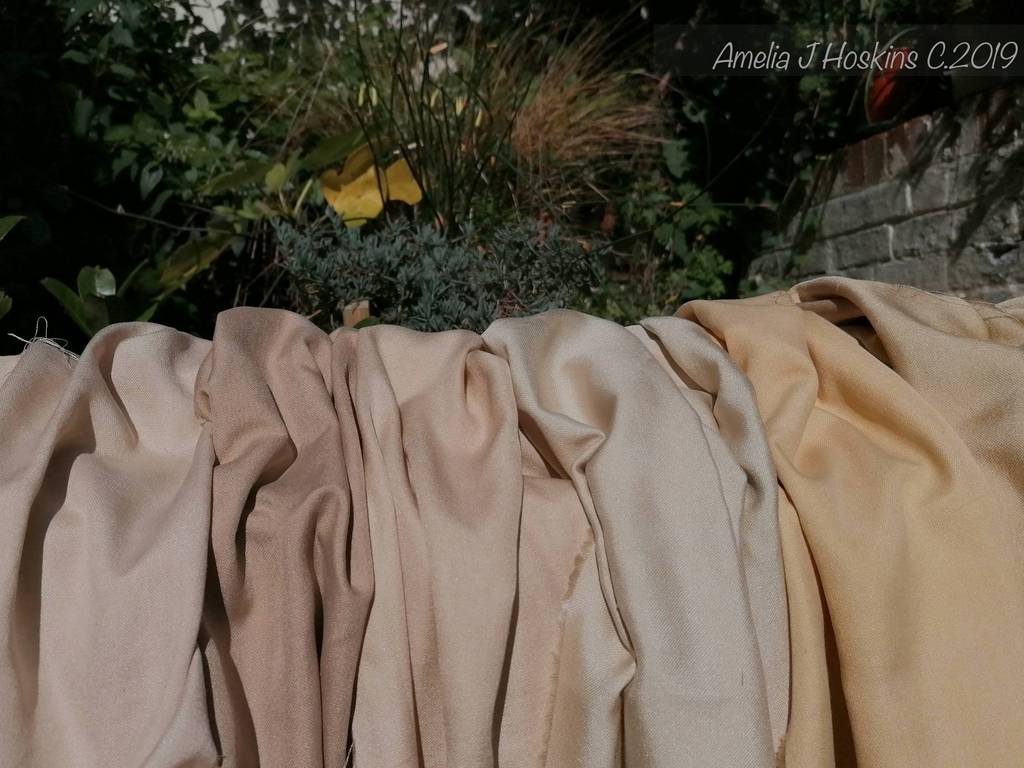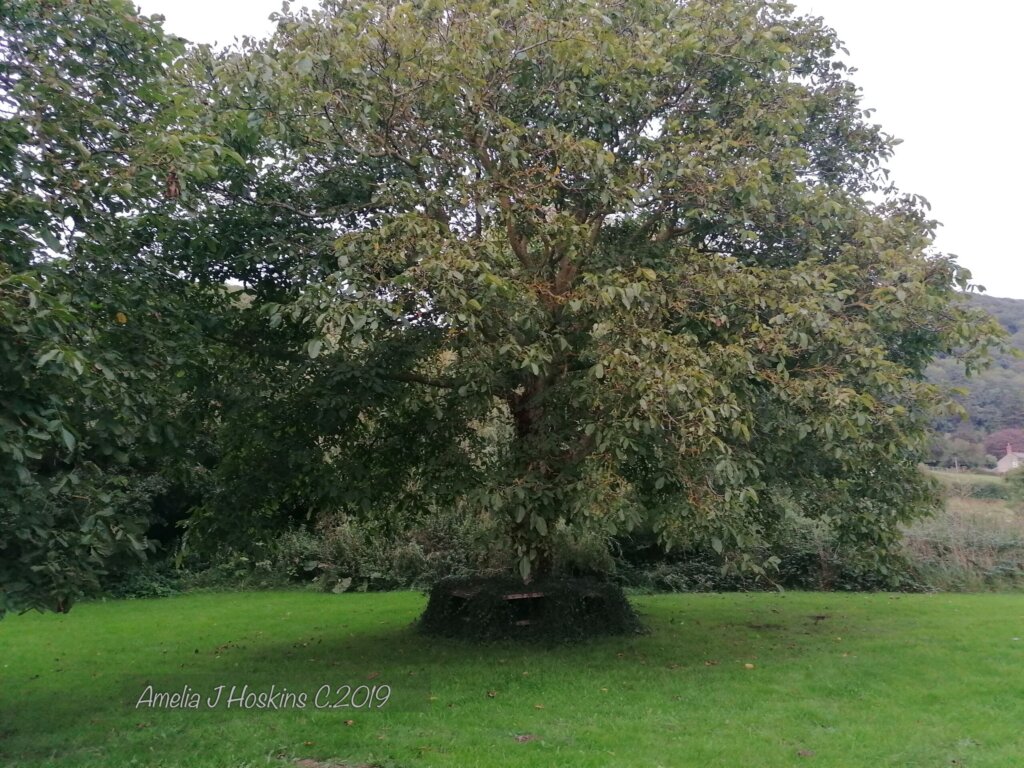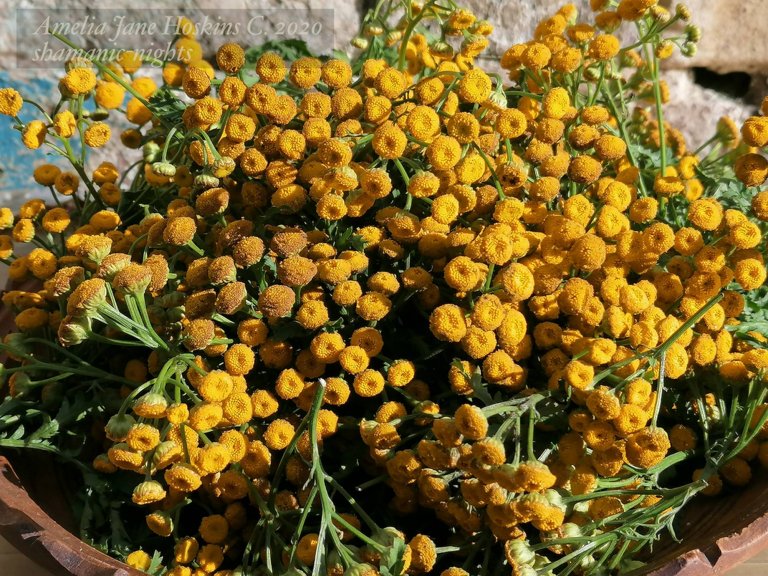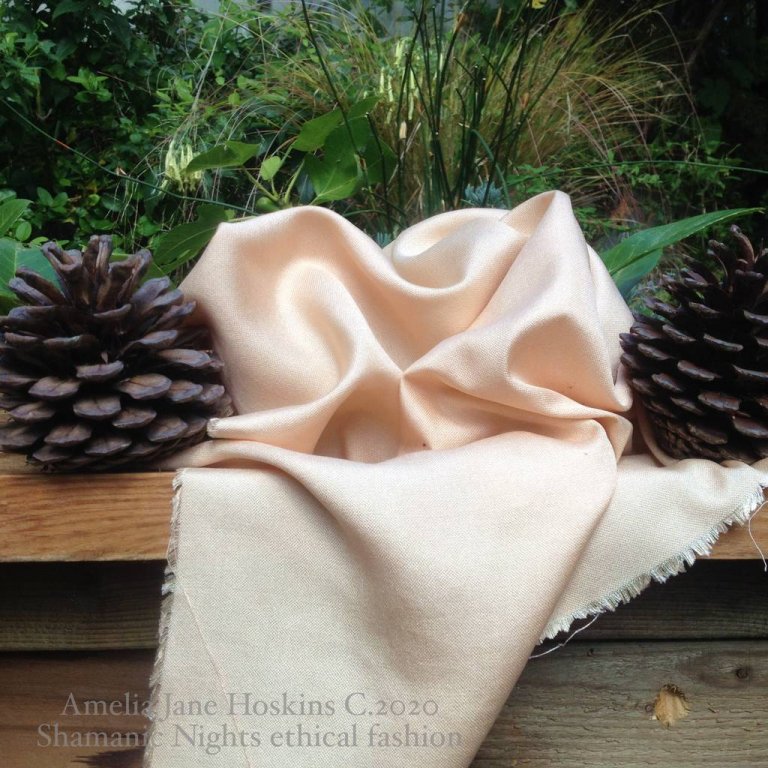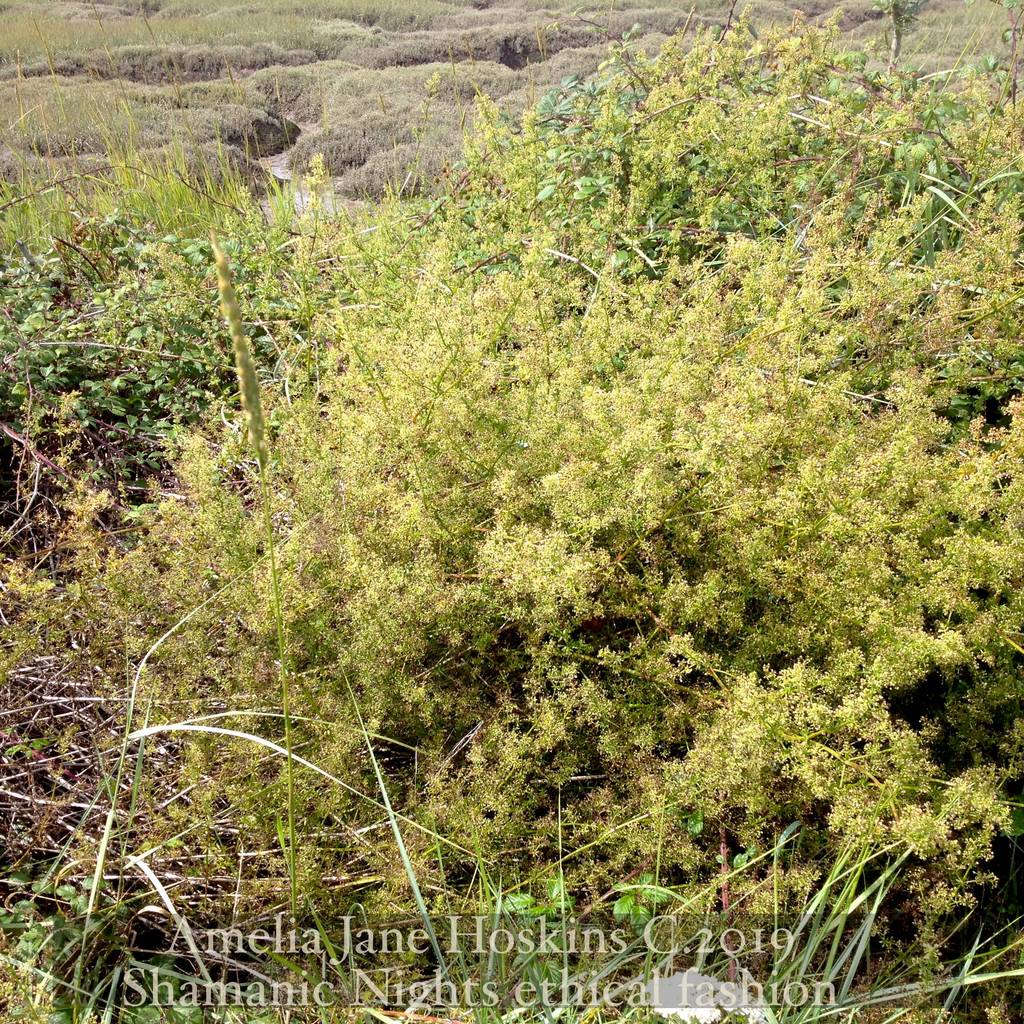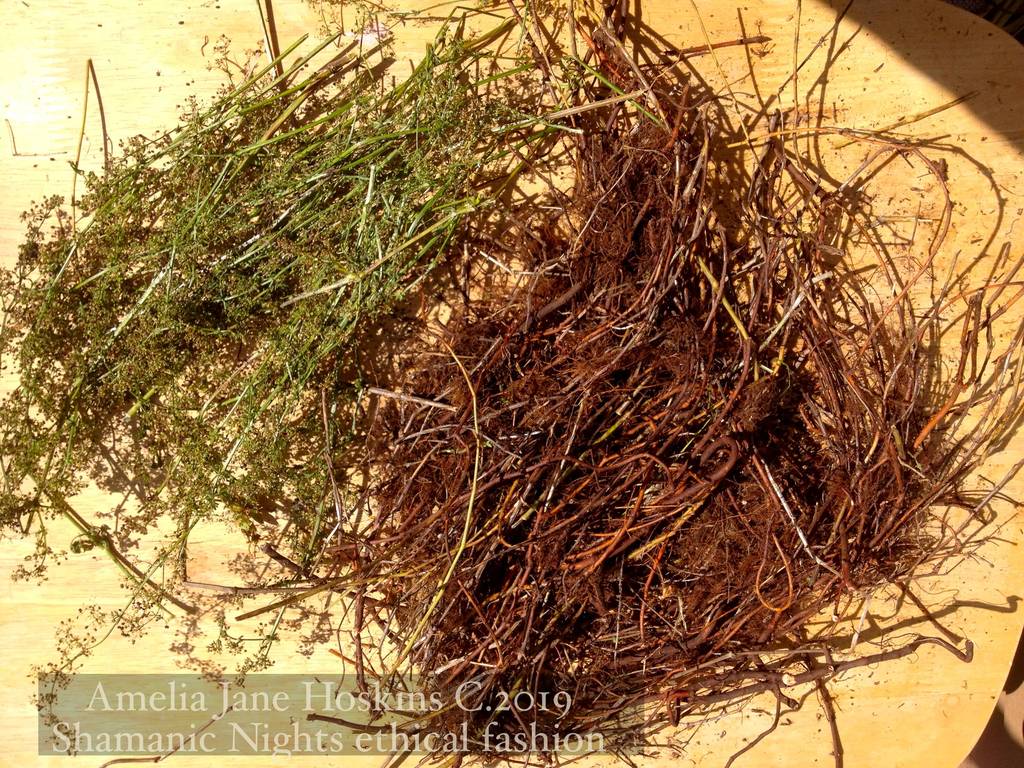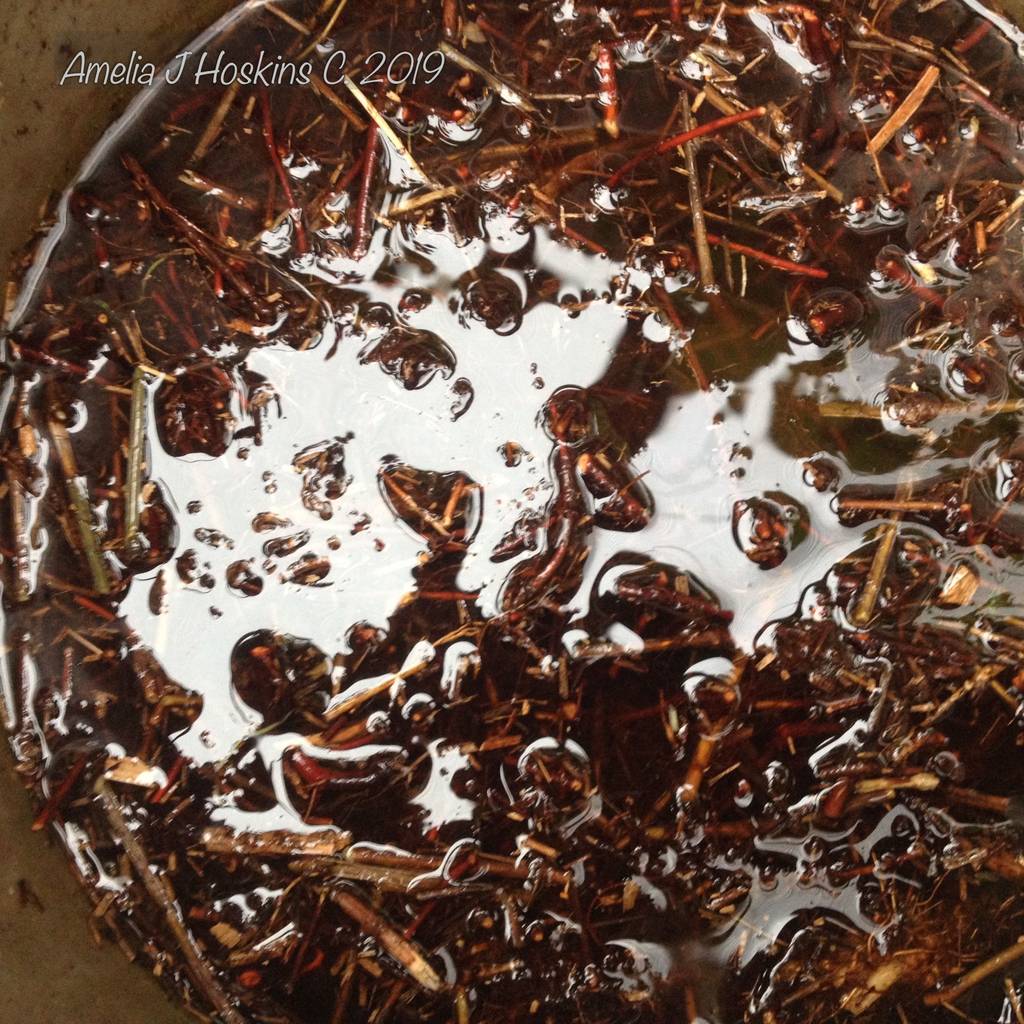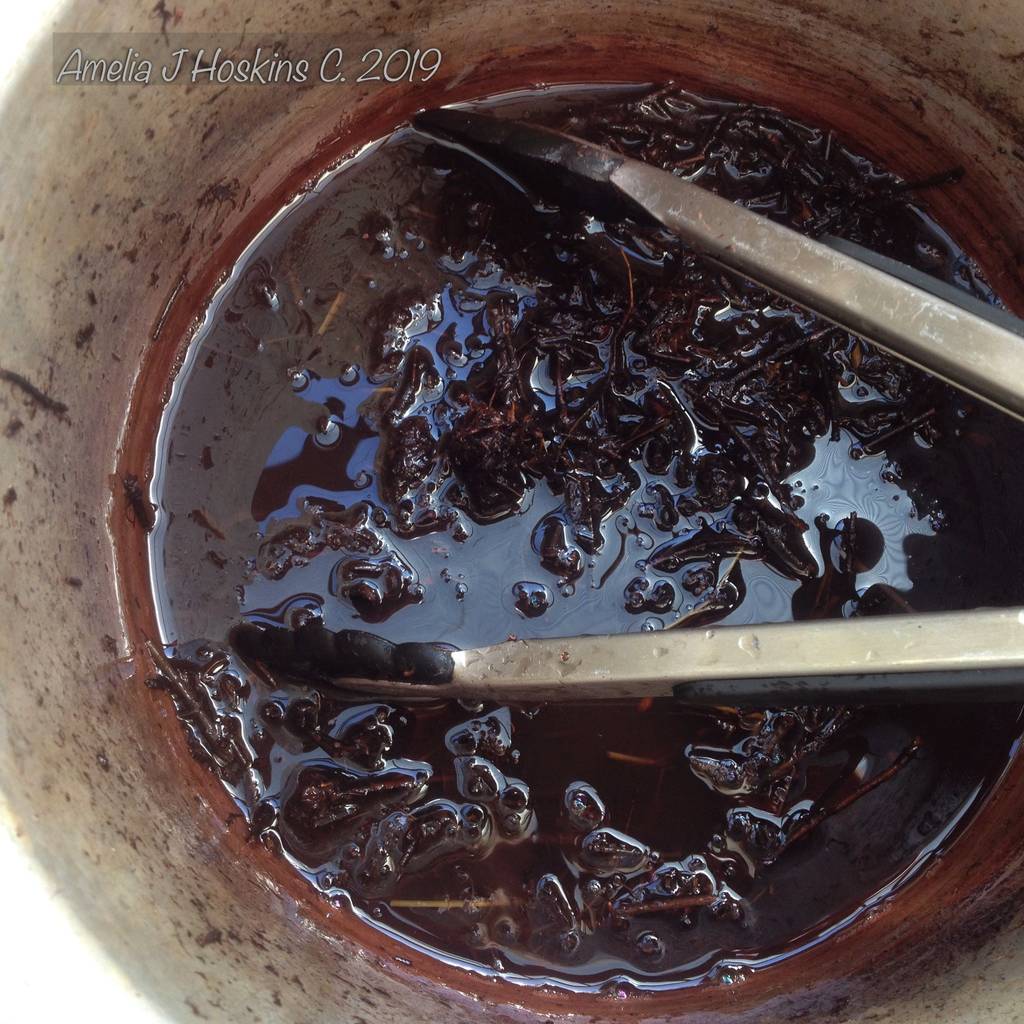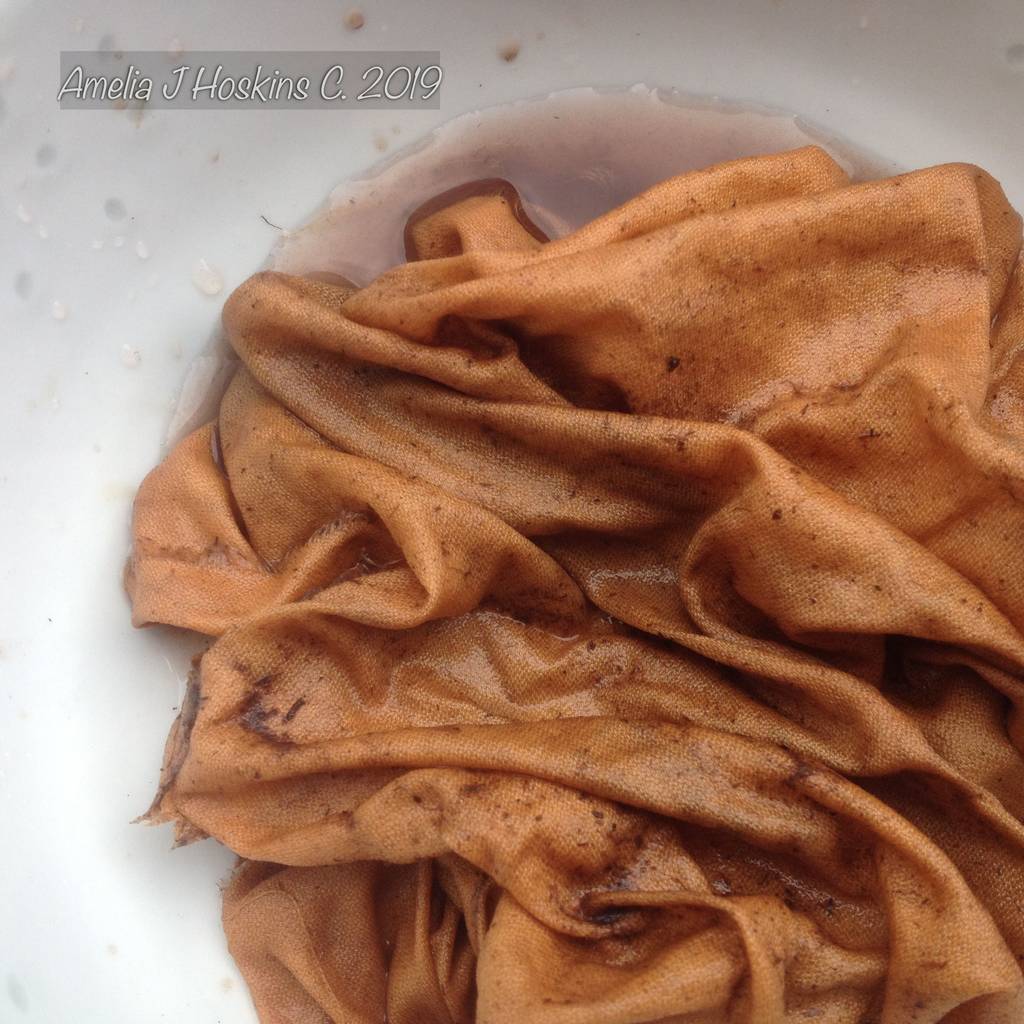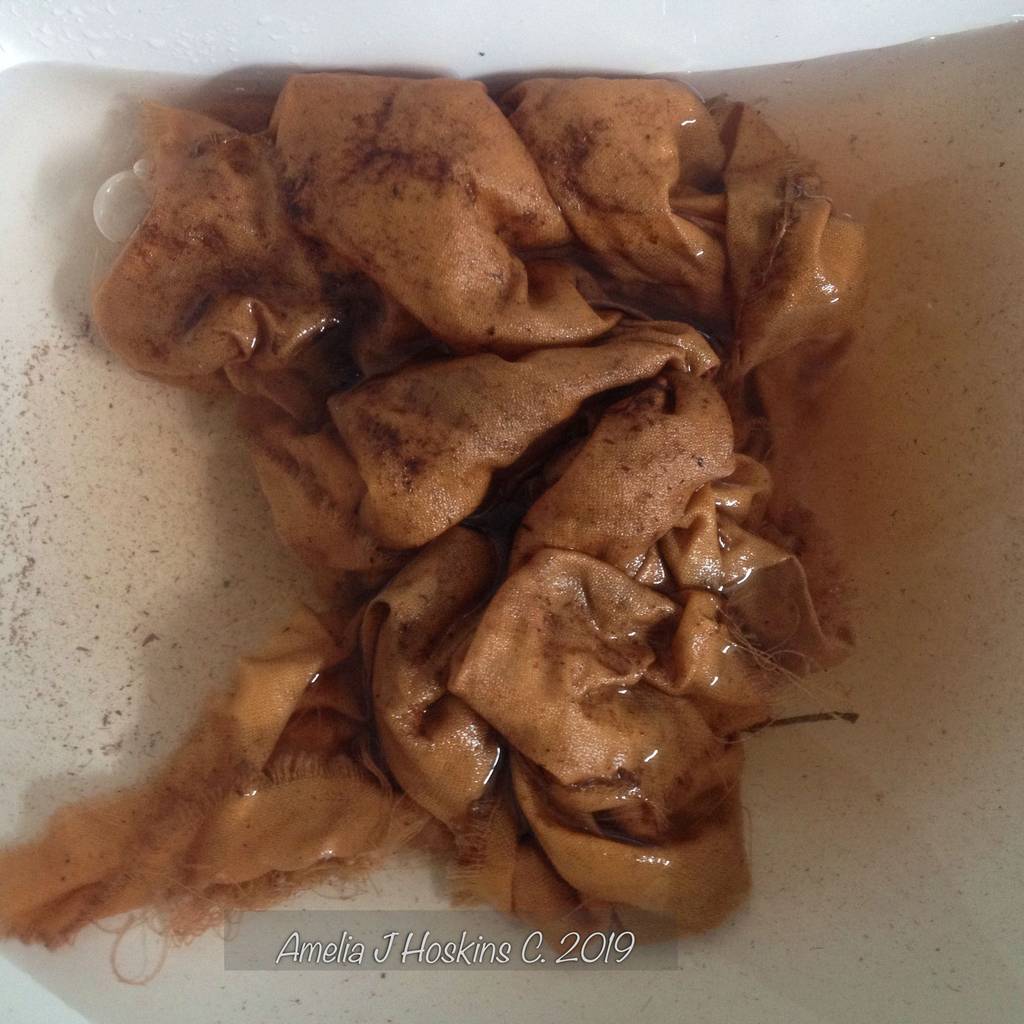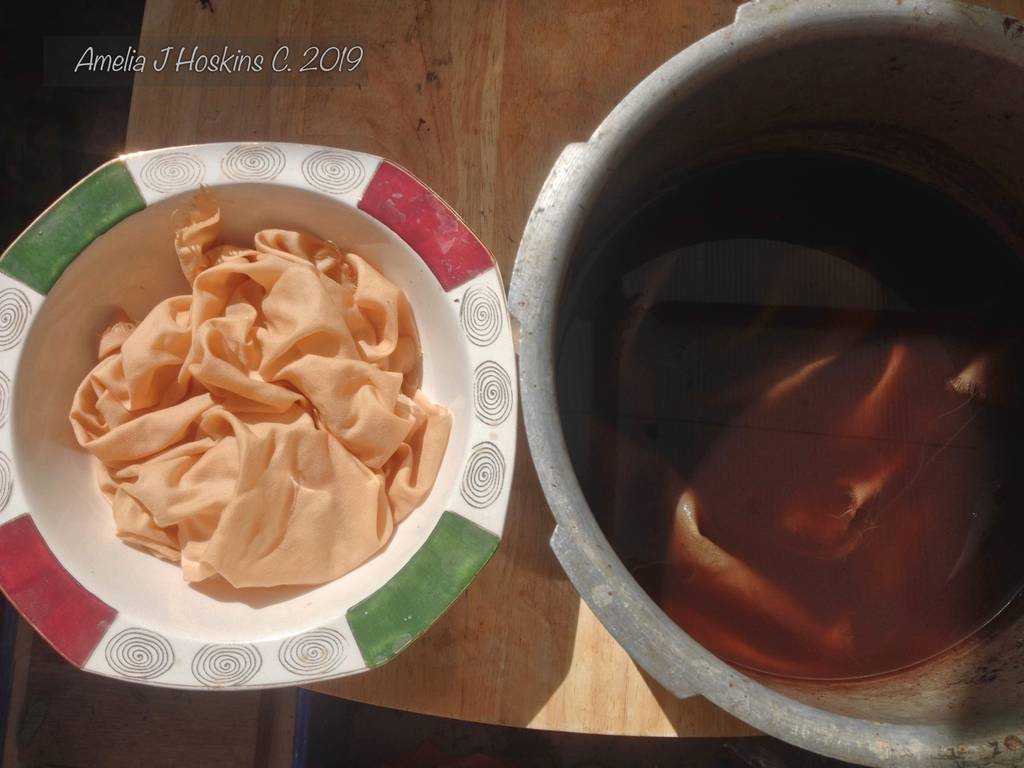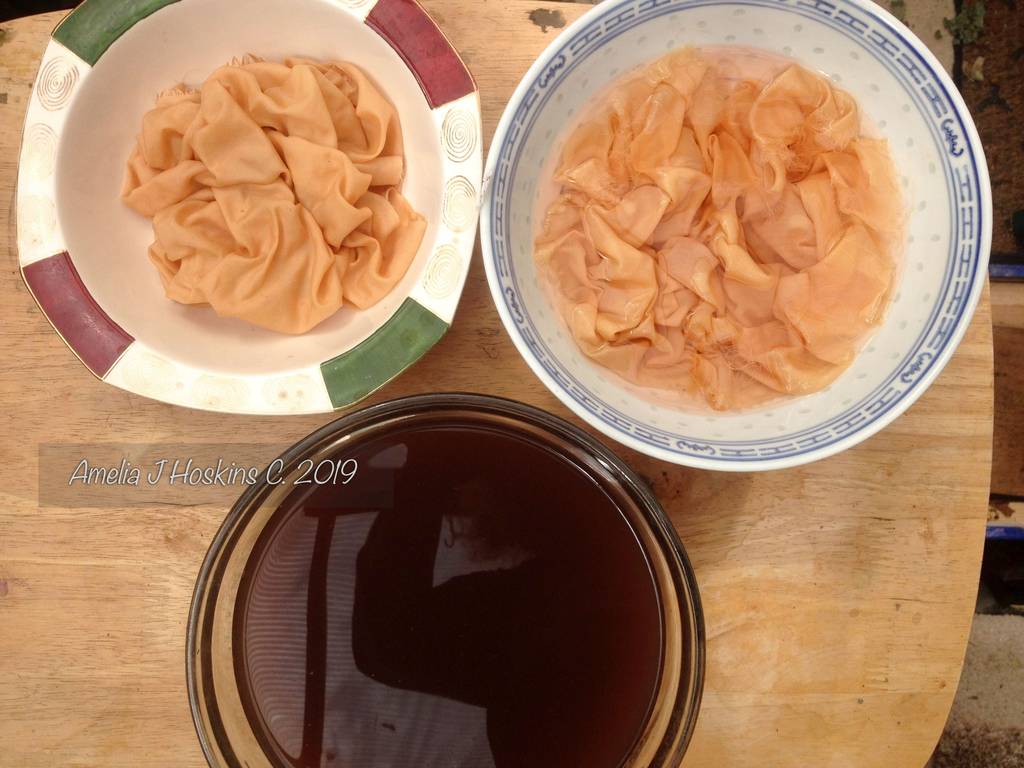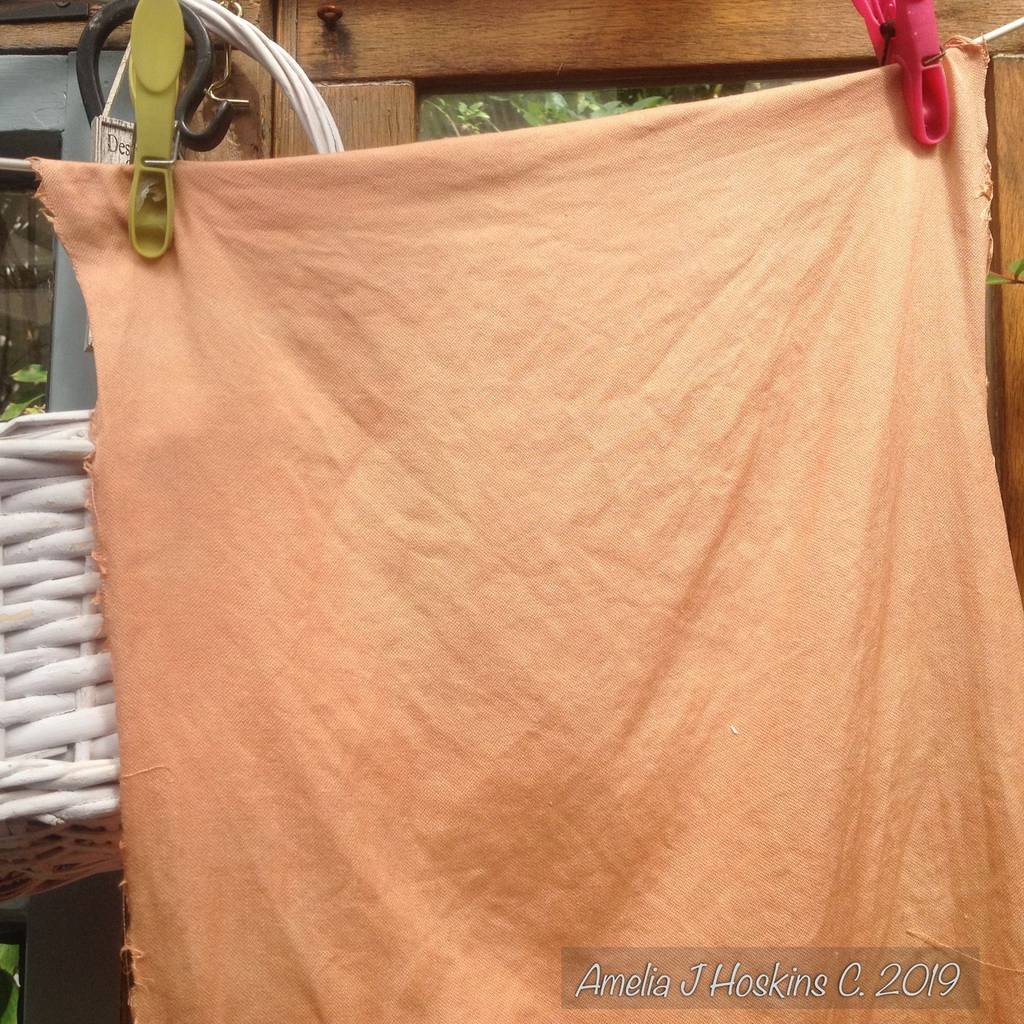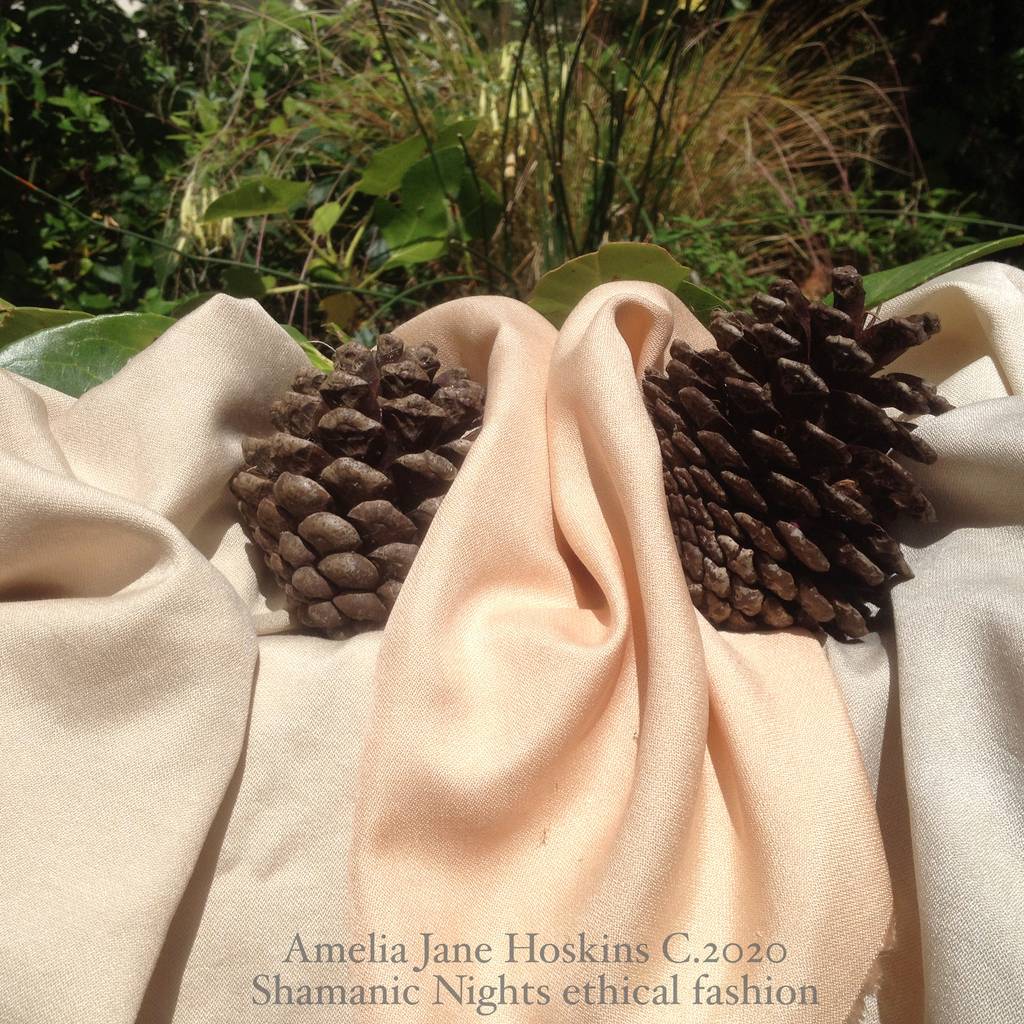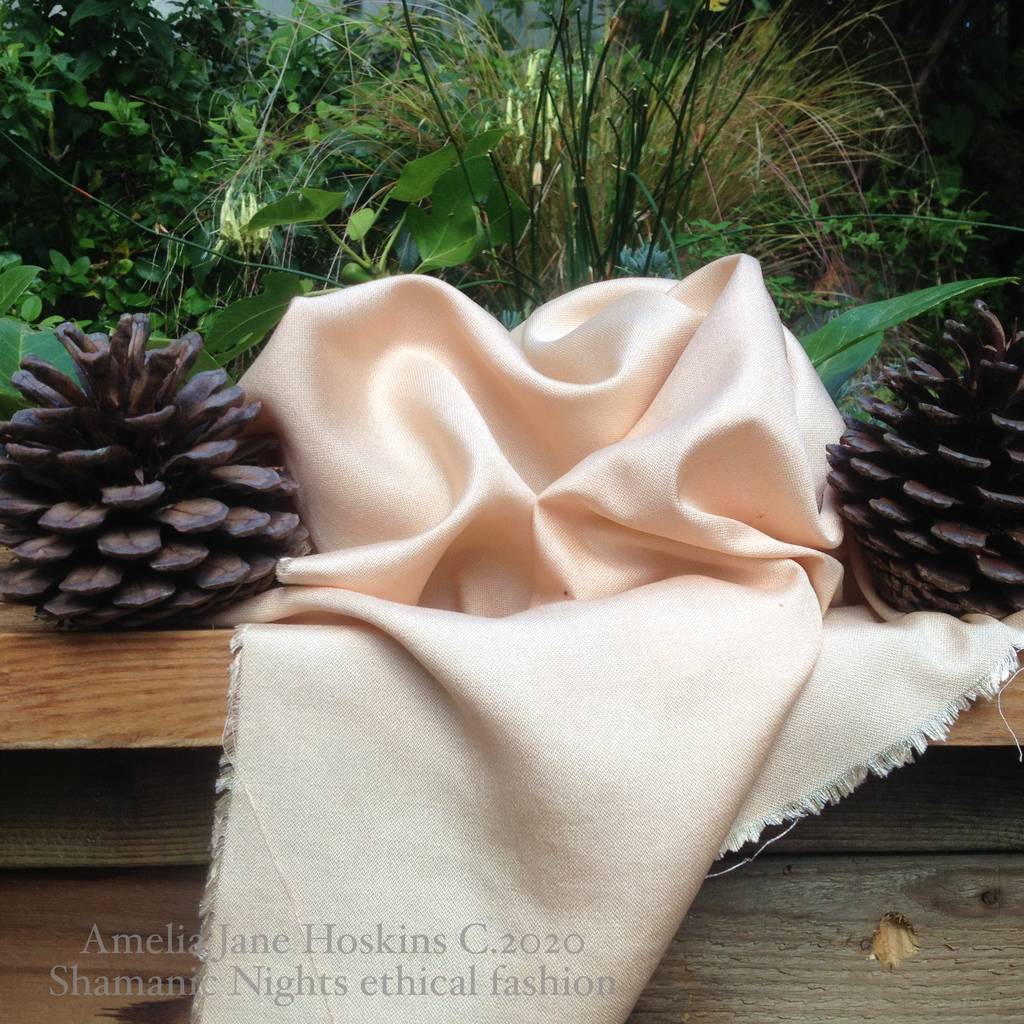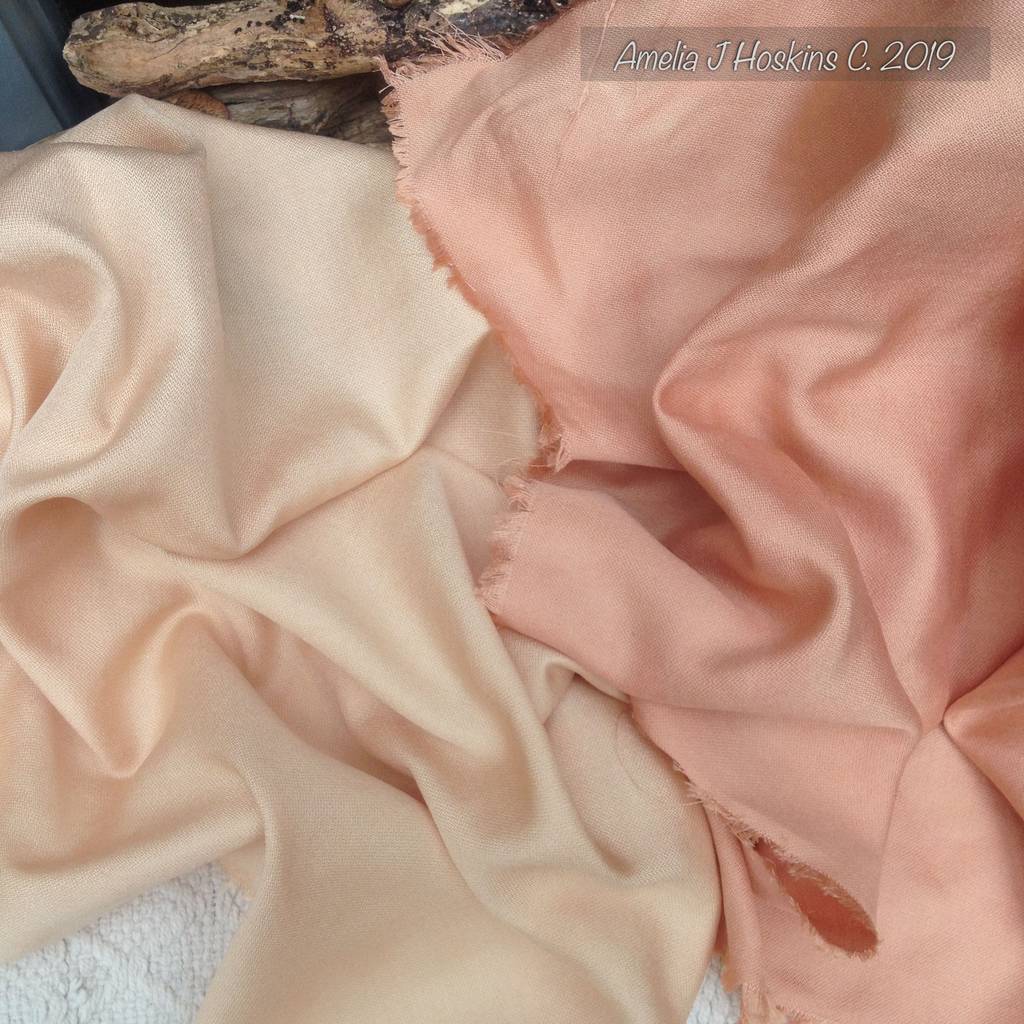26
Jun
Hawthorn Berries Three Rivers Dyed Silk
Hawthorn Berries 1 - River Taw
Berries from Tarka Trail foraging trip along River Taw found by ditch and field growing through hazelnut and willow trees with briars and nettles.
Hawthorn (1) - Dye Bath Process
- Soak berries for 2-3 days.
- Boil then simmer for 1-2 hours. Add water and re-simmer if evaporates.
- Mash berries, remove pulp from dye pan. Cool to hand hot.
- Soak silk in dye bath pot overnight or for two days.
- The longer soaked, the darker and stronger the colour.
Hawthorn Berries 2 - River Otter - Dye Process
Soak berries and simmer as Hawthorn (1). Two silk samples were added to dye liquid when cooled and soaked in a wide copper pot for a day and a night. One was cream. The other was dull pale grey (failed woad dyed piece) which resulted in a browner result. (Colour mixing: grey + hawthorn = brown)
Comparisons - Rivers Taw - River Otter berries
Taw berries result is golden. Otter berries result is dull fawn. Unknown whether the different river soils affected the dye colour, or if the copper pot had an effect, which is likely.
Hawthorn Berries 3 - River Exe - Dye Process
Hawthorn Berries River Exe Sessions1,2,3,4 give 4 colour variations
Silk 1 - Lime green. Silk 2 - Medium mauve. Silk 3 - Silver. Silk 4 - Pale peach
Fascinating variations obtained by use of mordants, or washing out methods, or how fresh or old/exhausted the dye bath becomes.
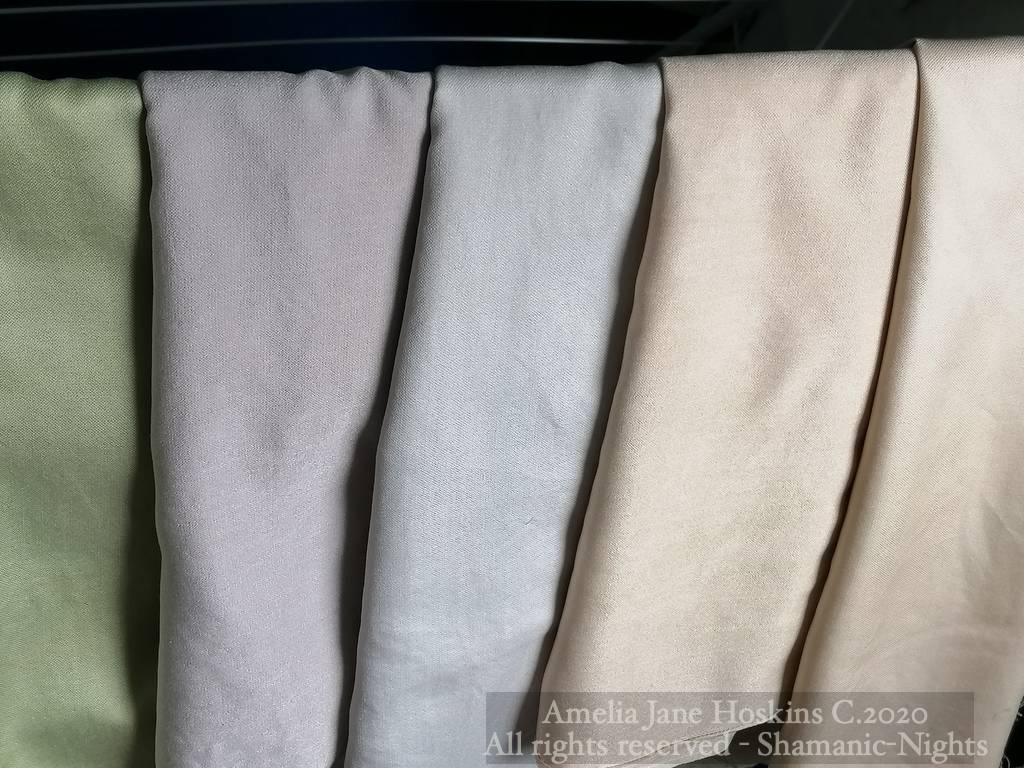
Exe Berries - Ahimsa Silk 2.
Two dress top shapes. NO premordant alum.
Steeped 24hrs in remainder dye bath pink sludgy liquid.
Washed out in tap water - stayed a medium MAUVE. (presume due to no alum).

